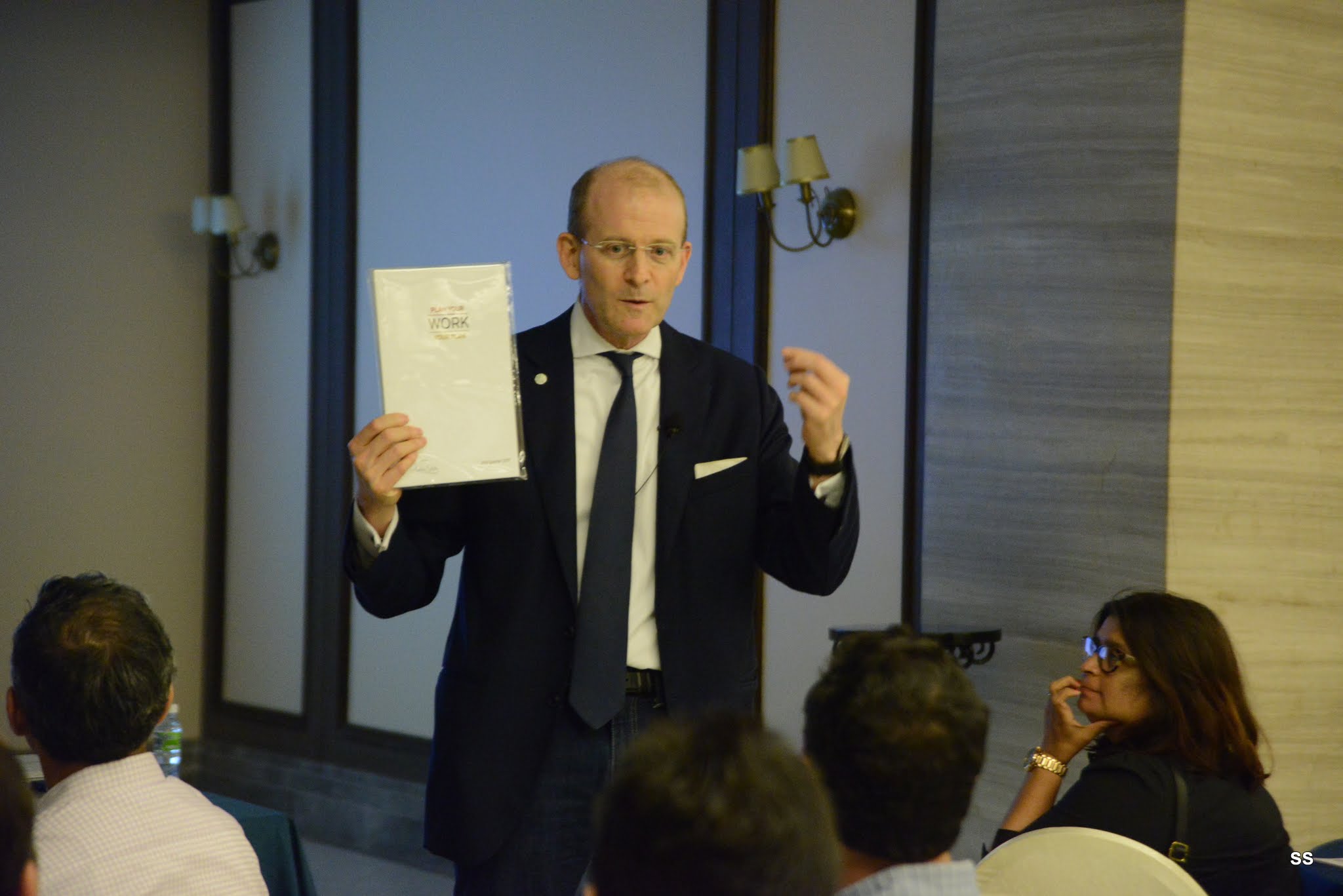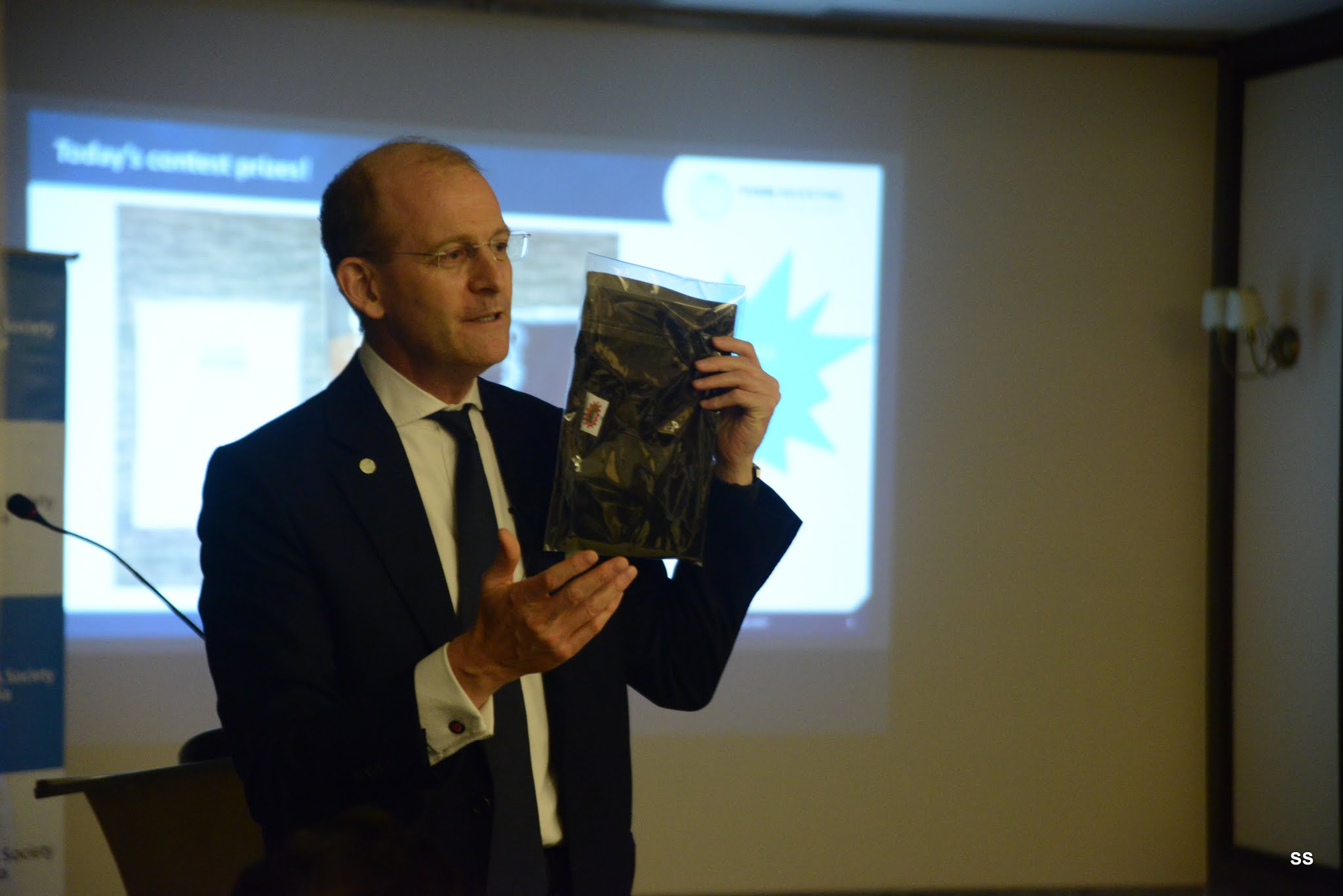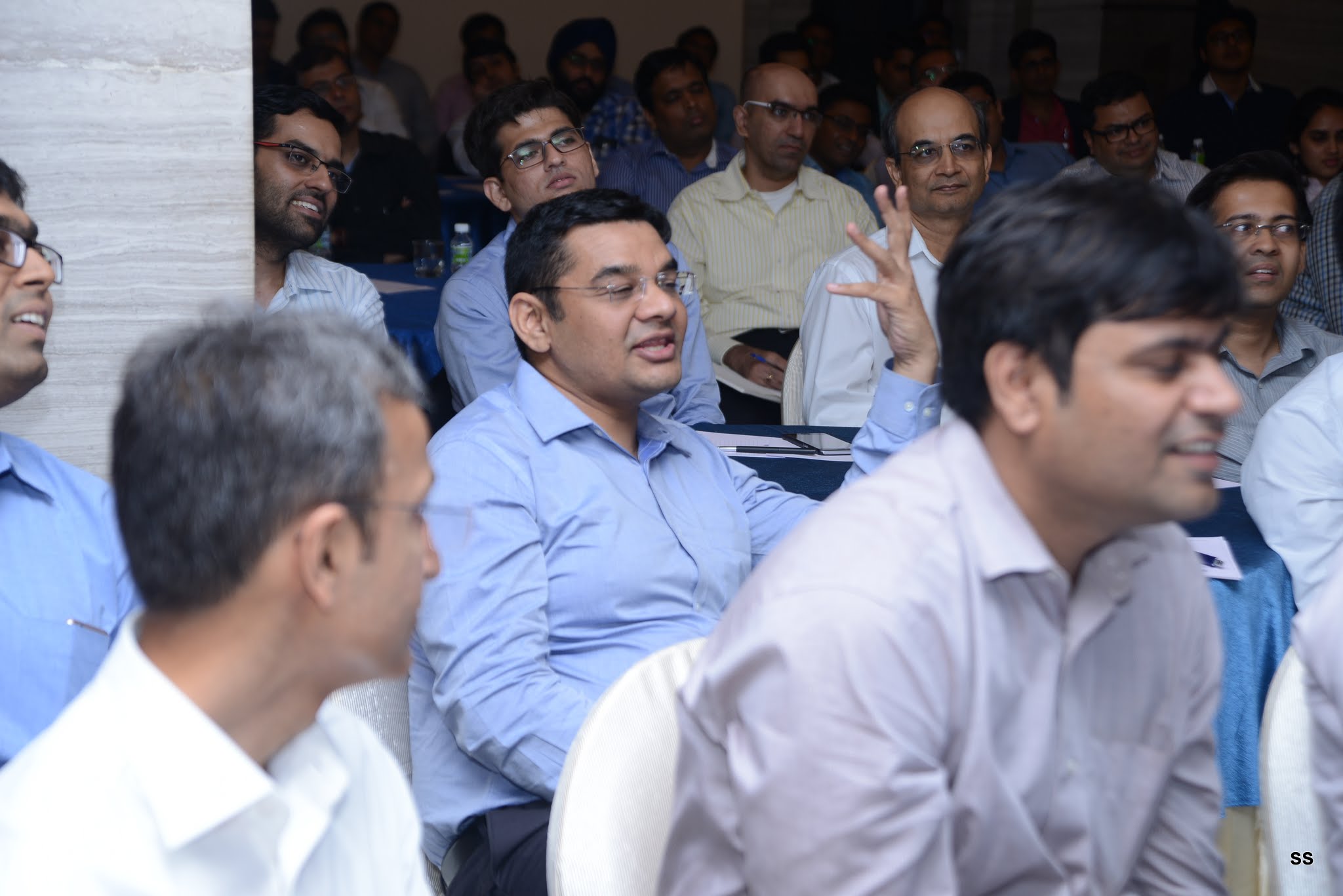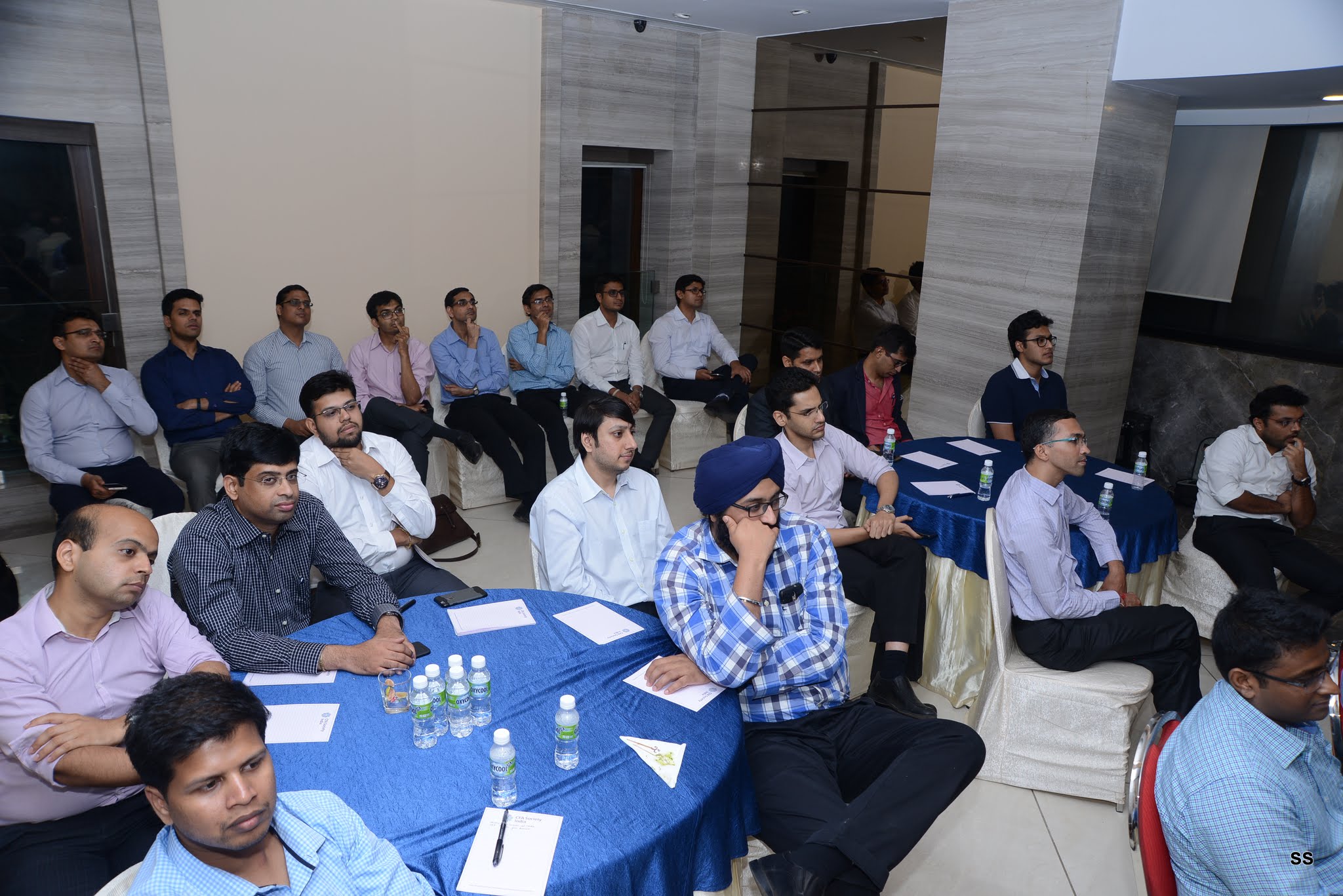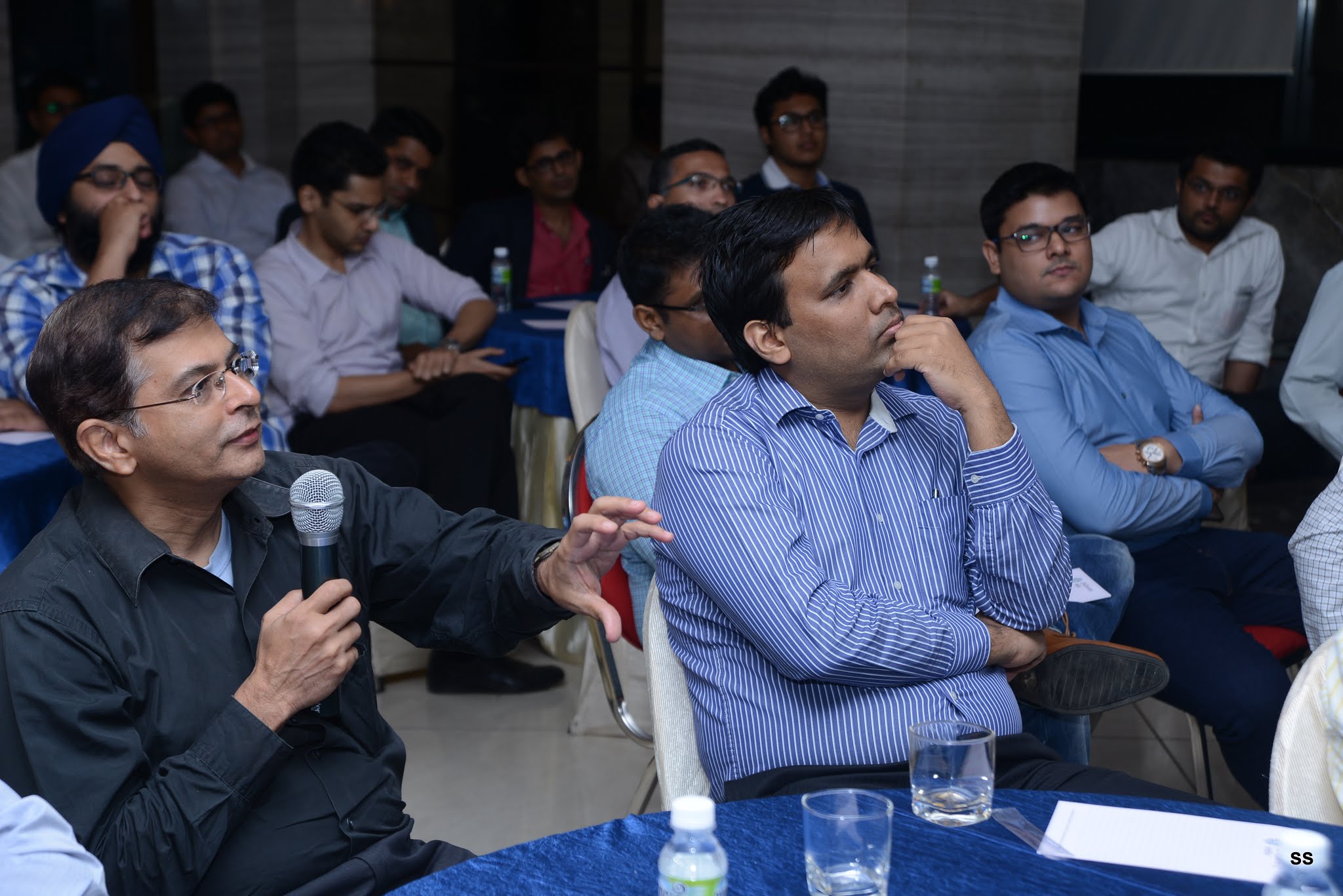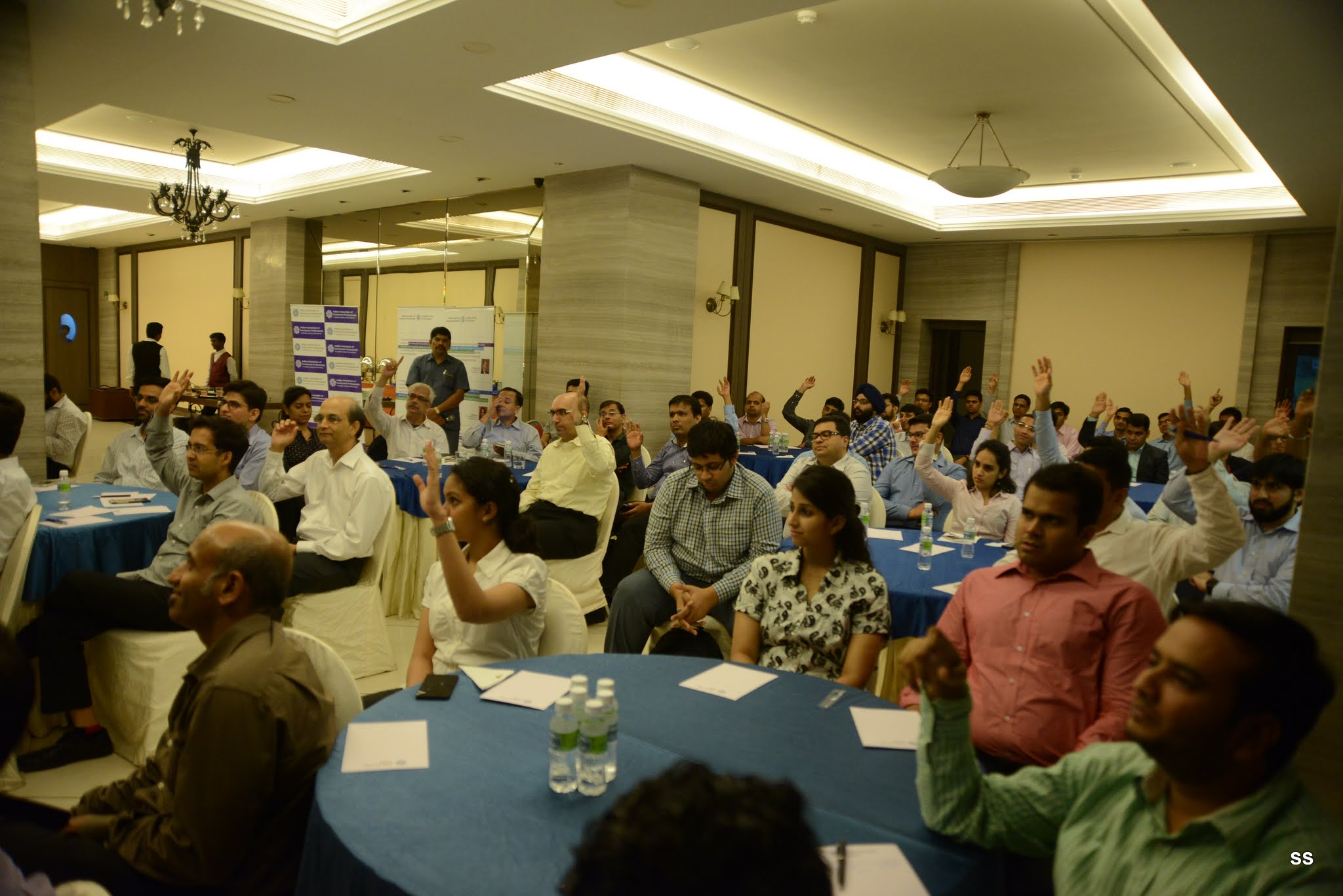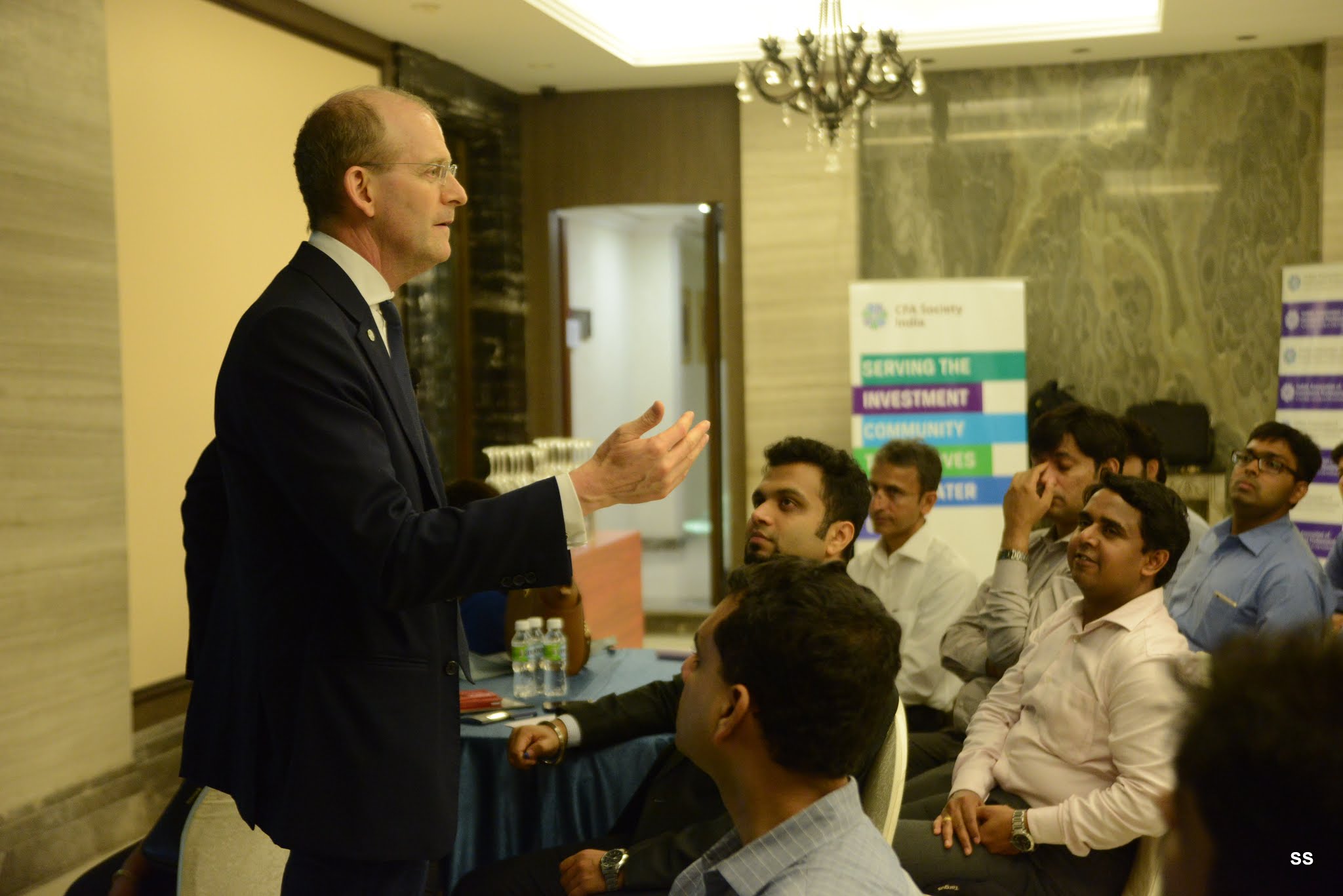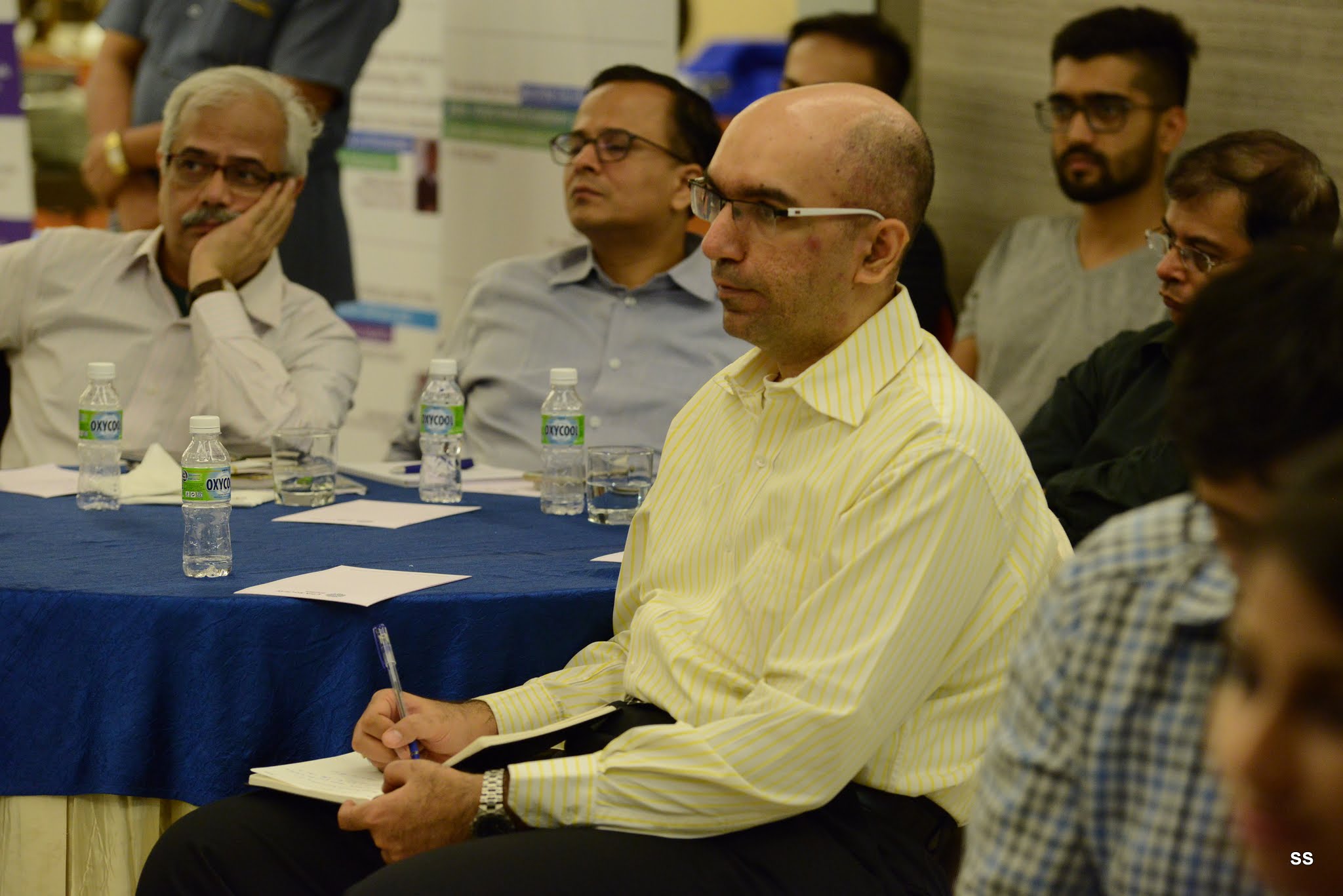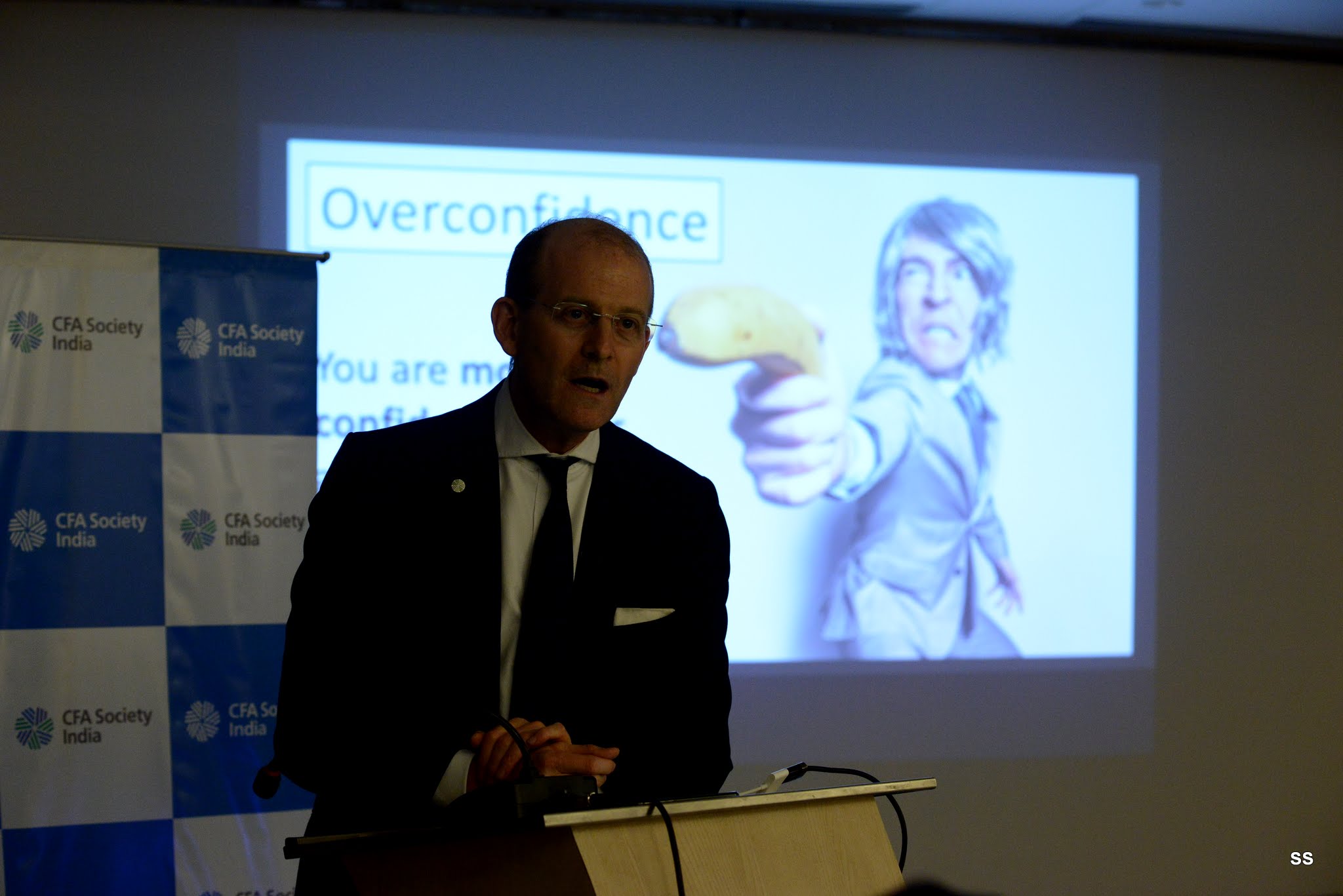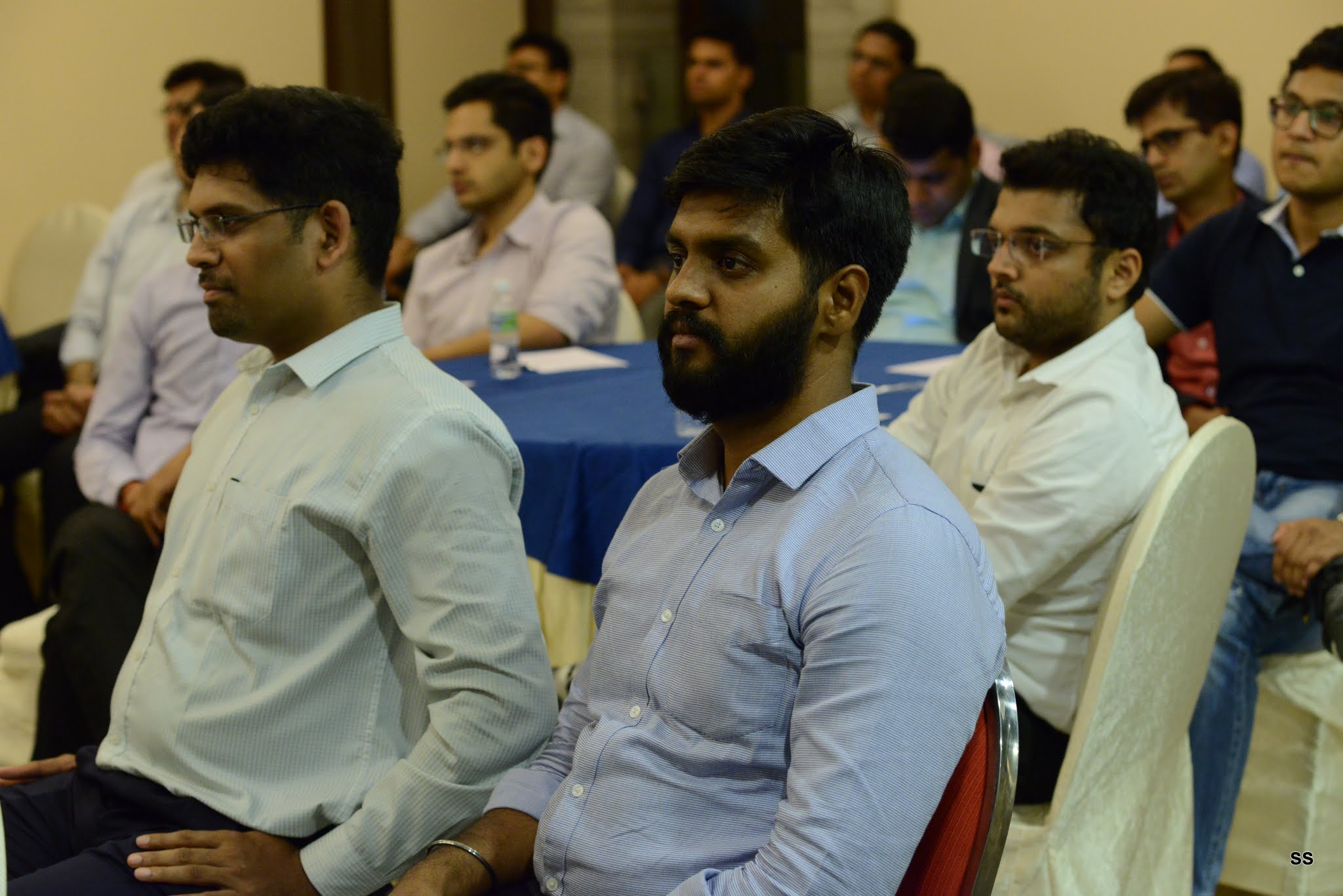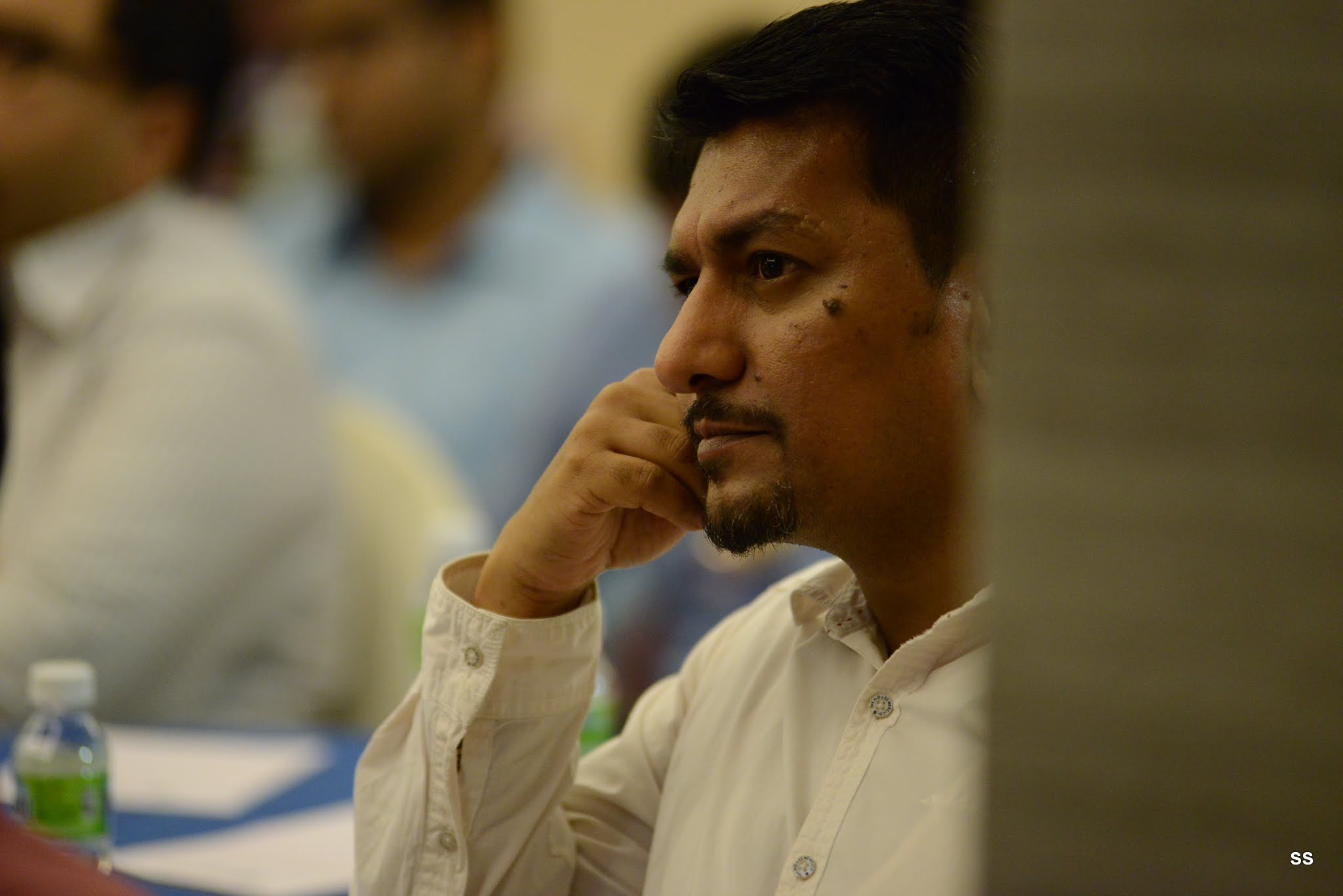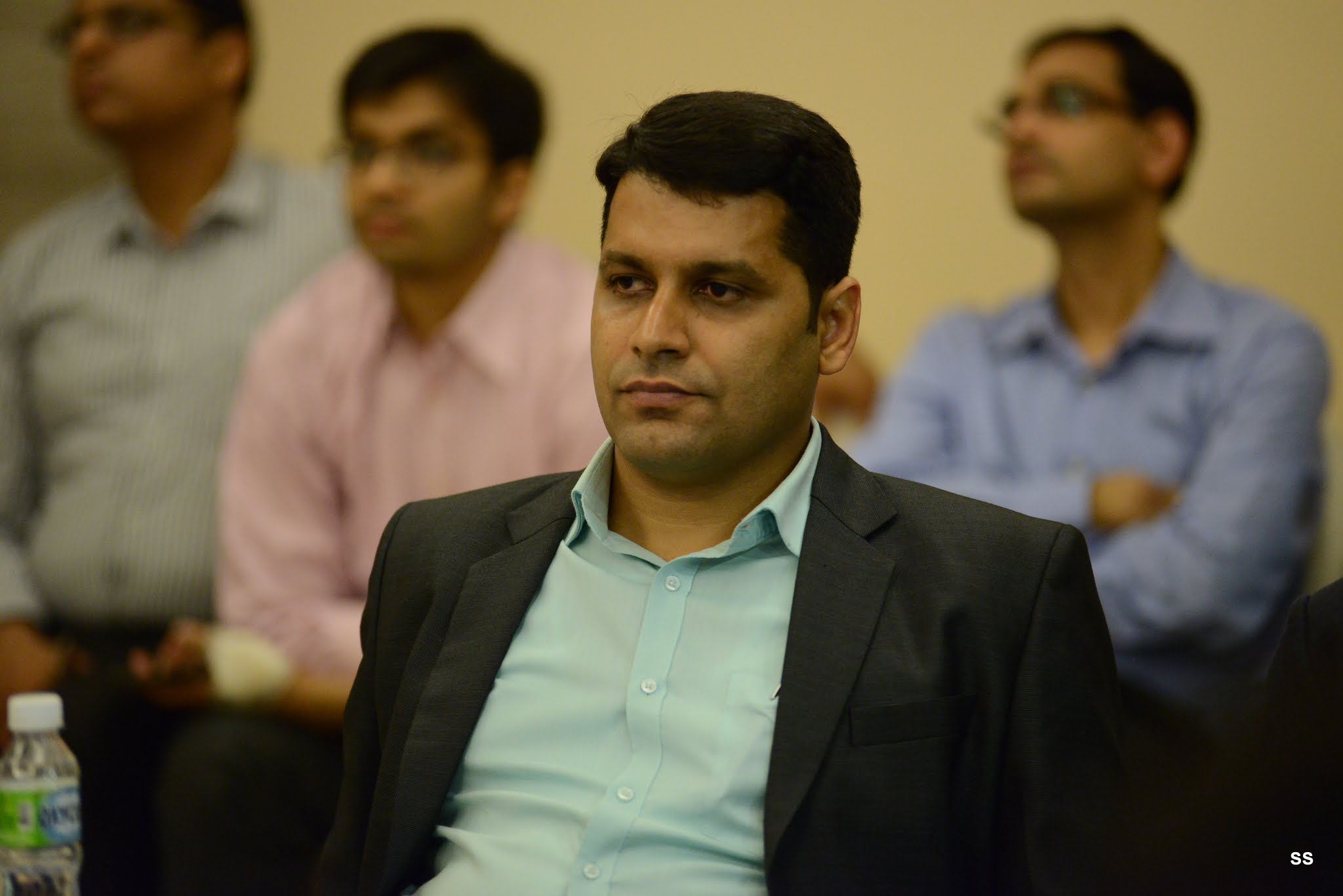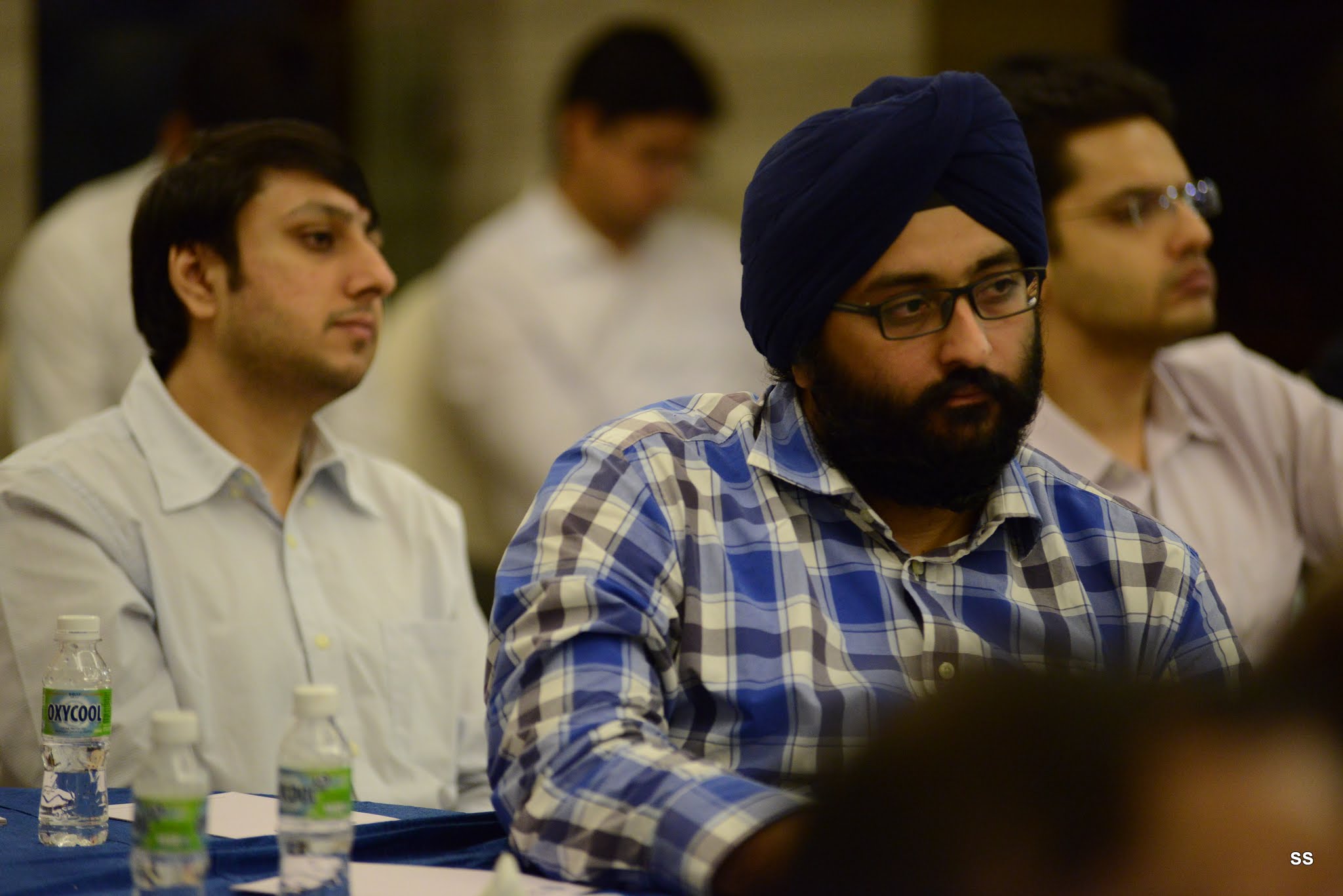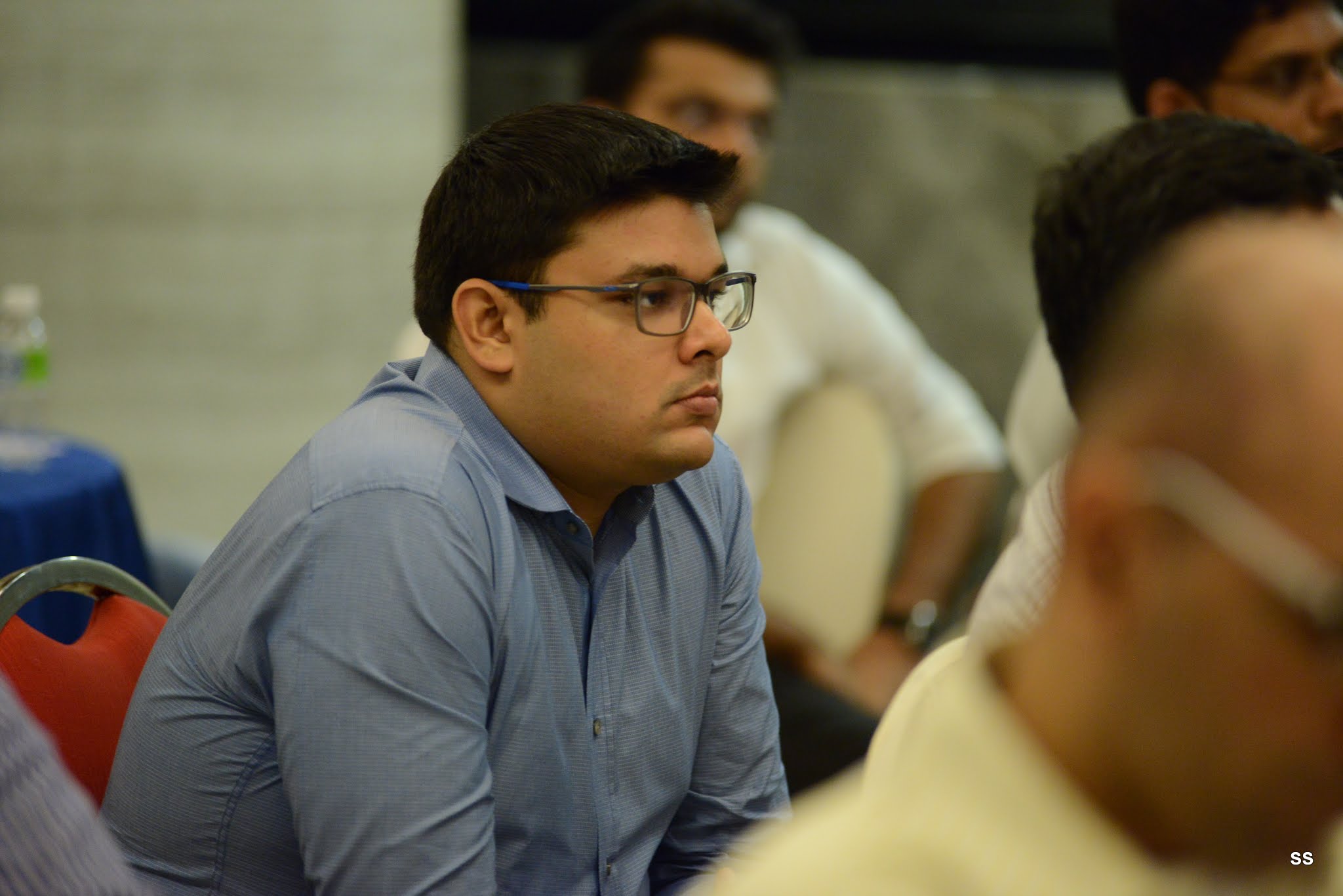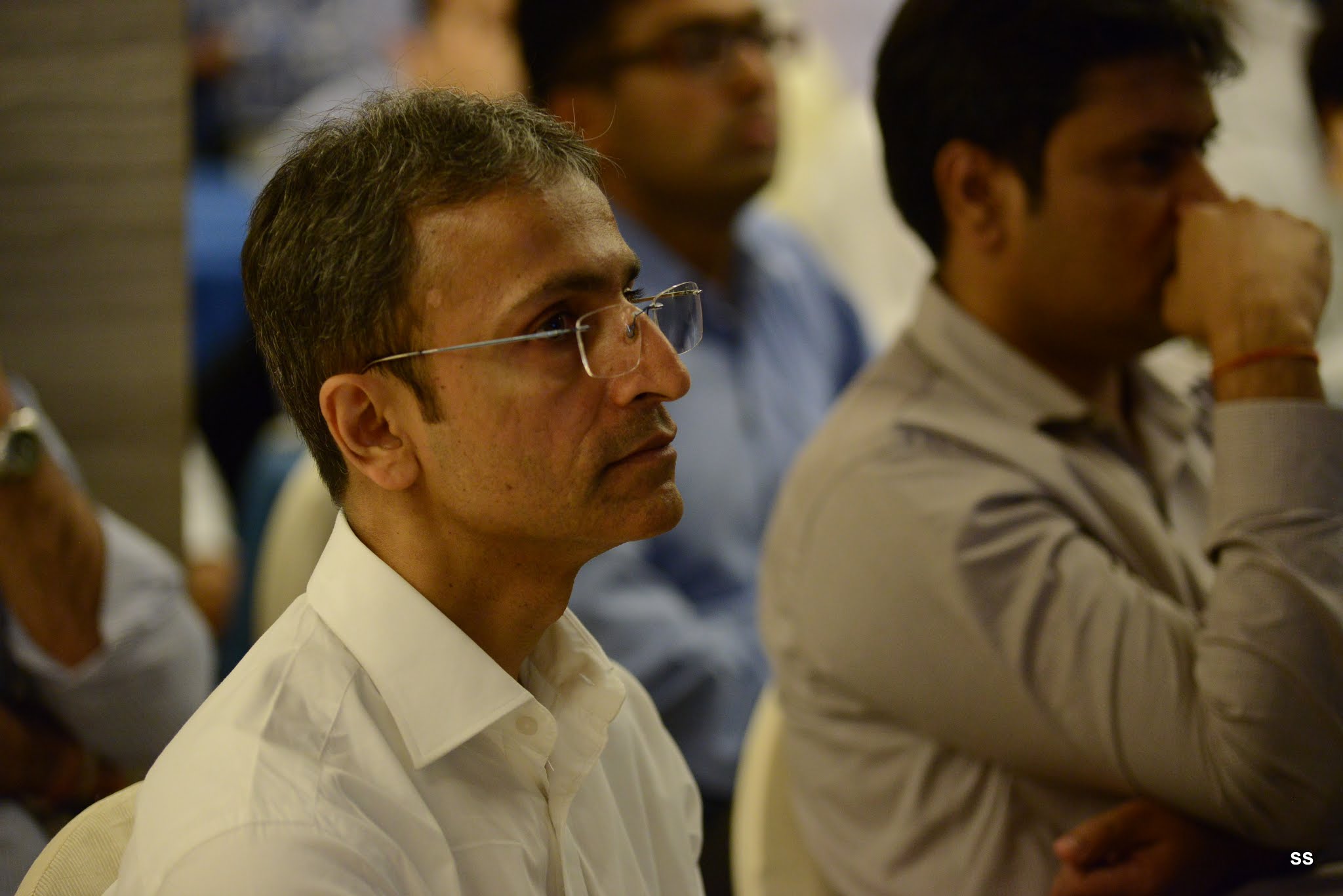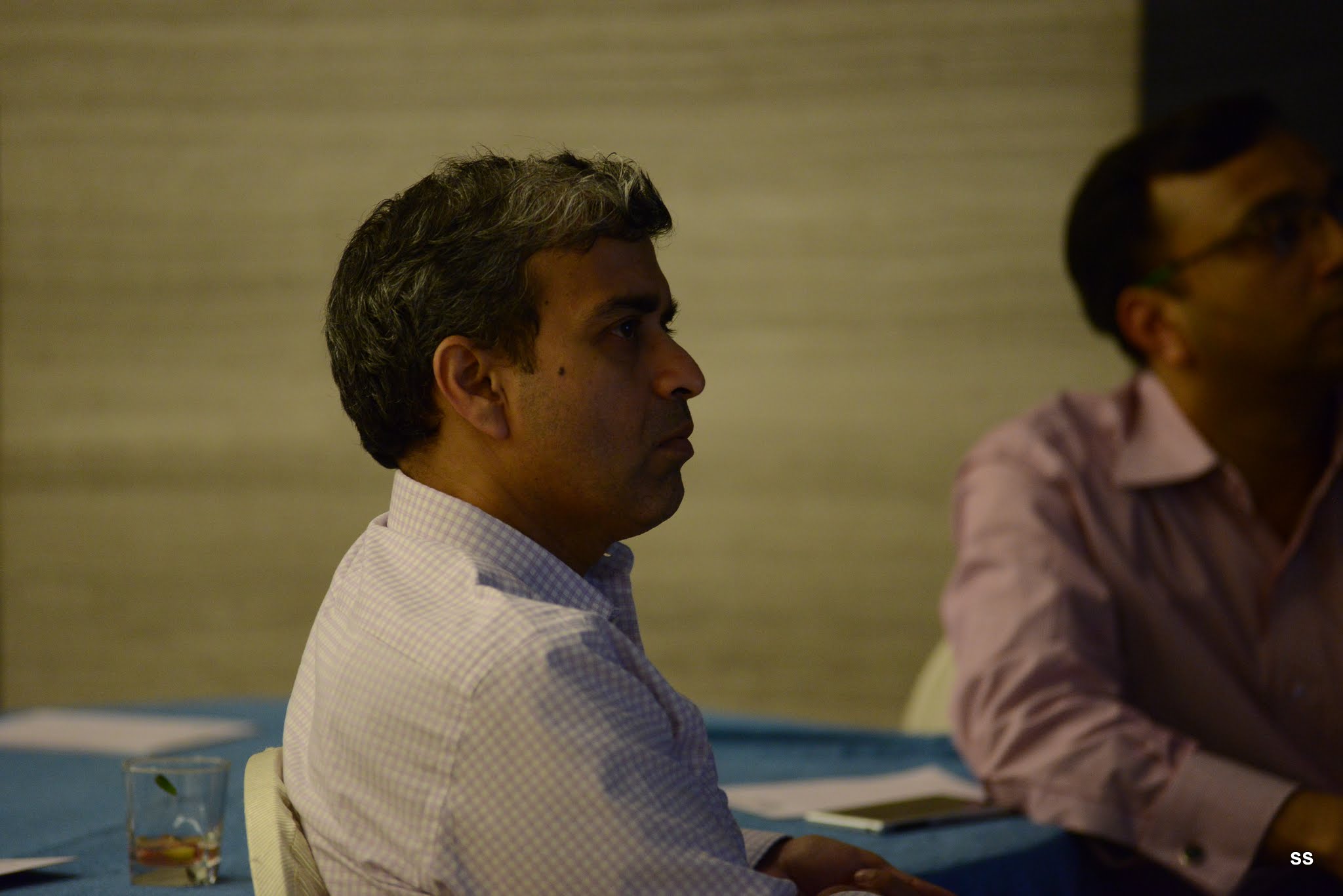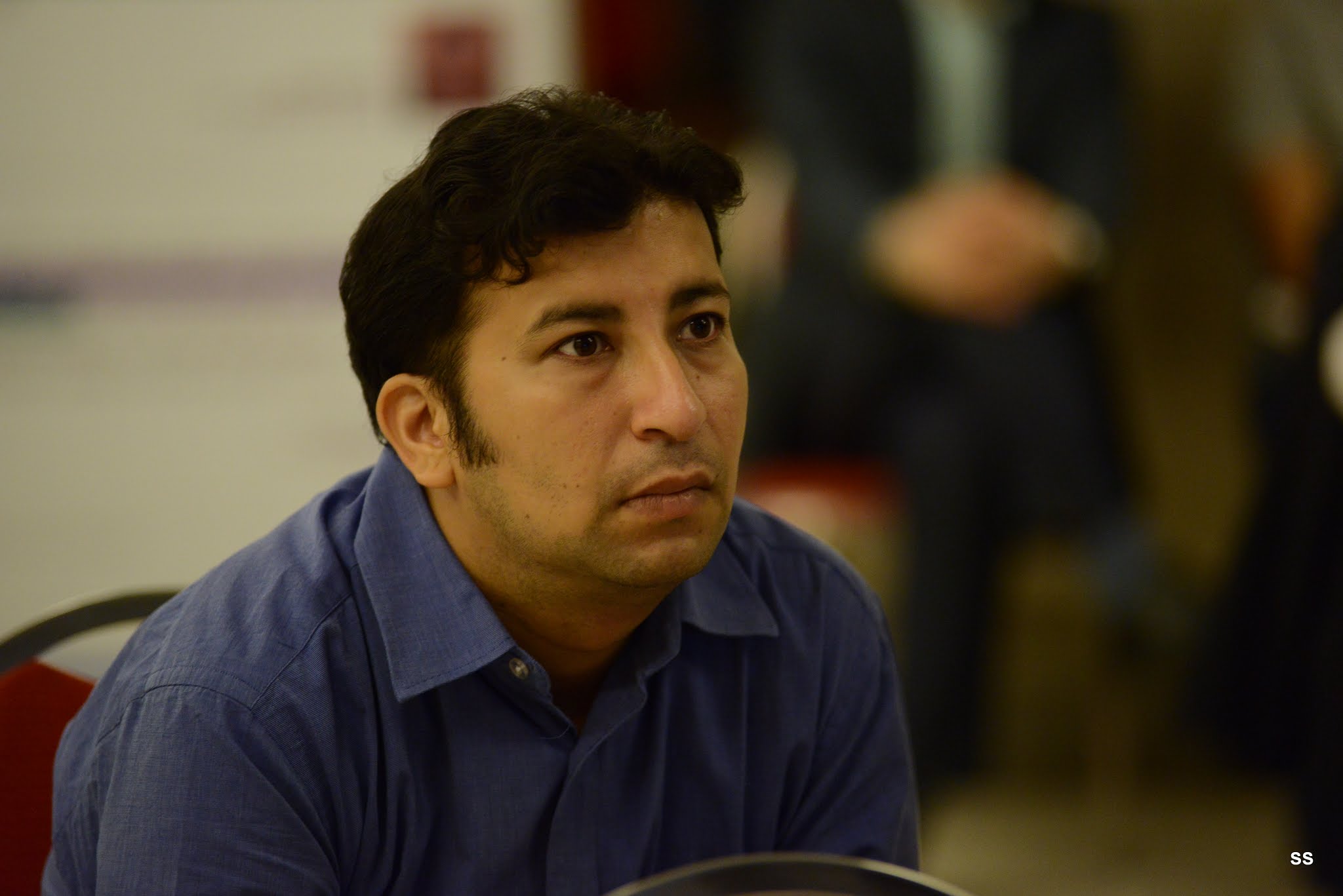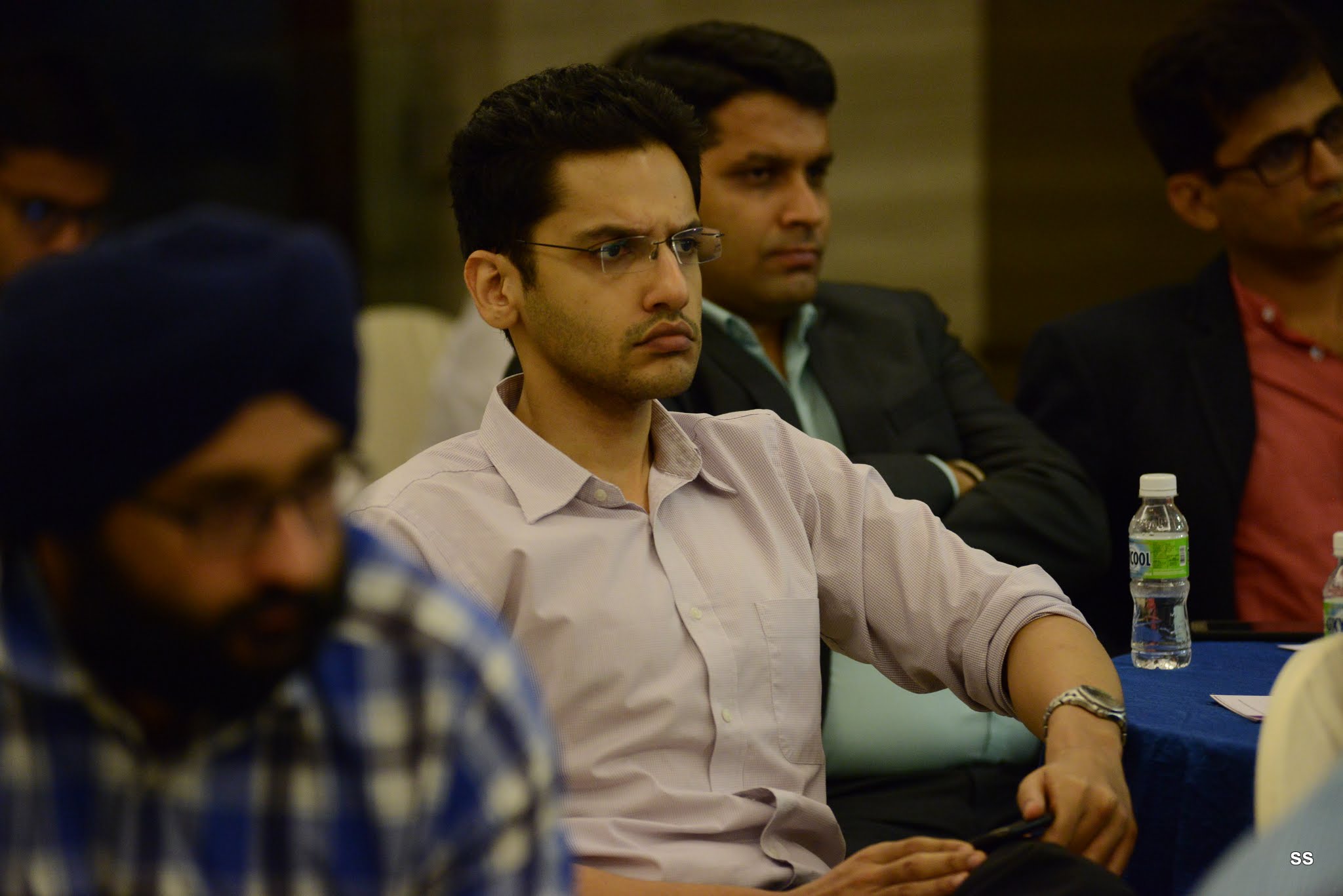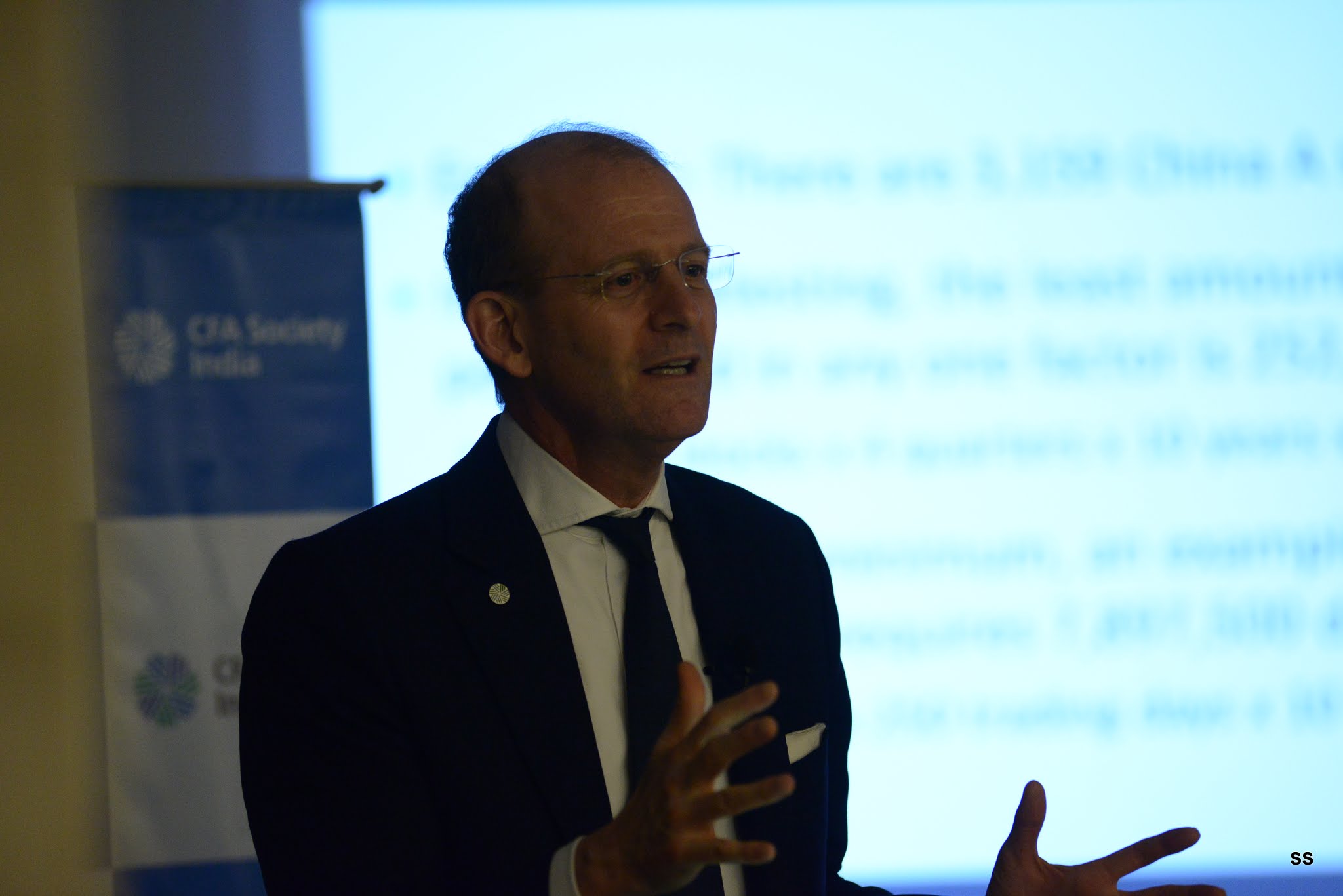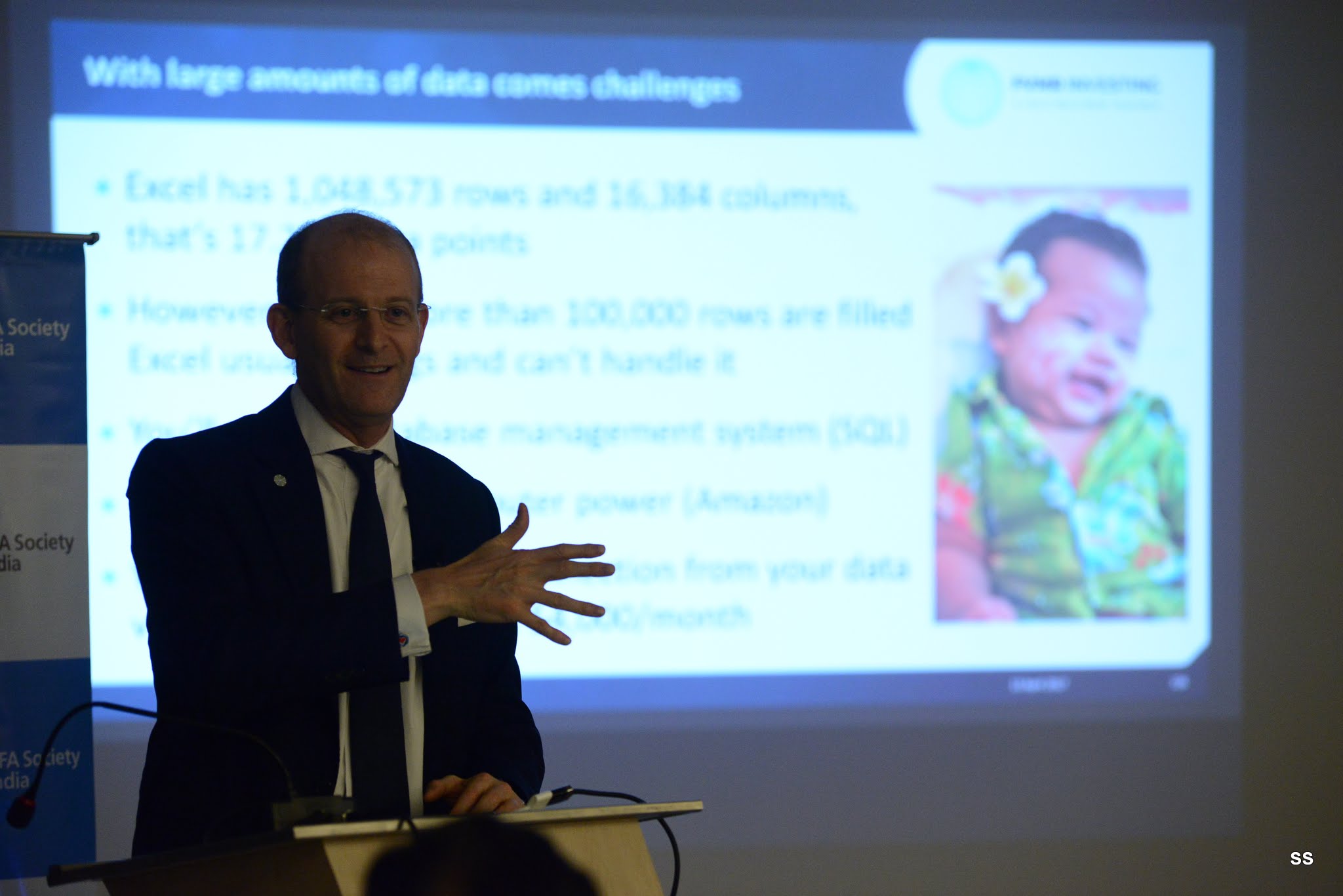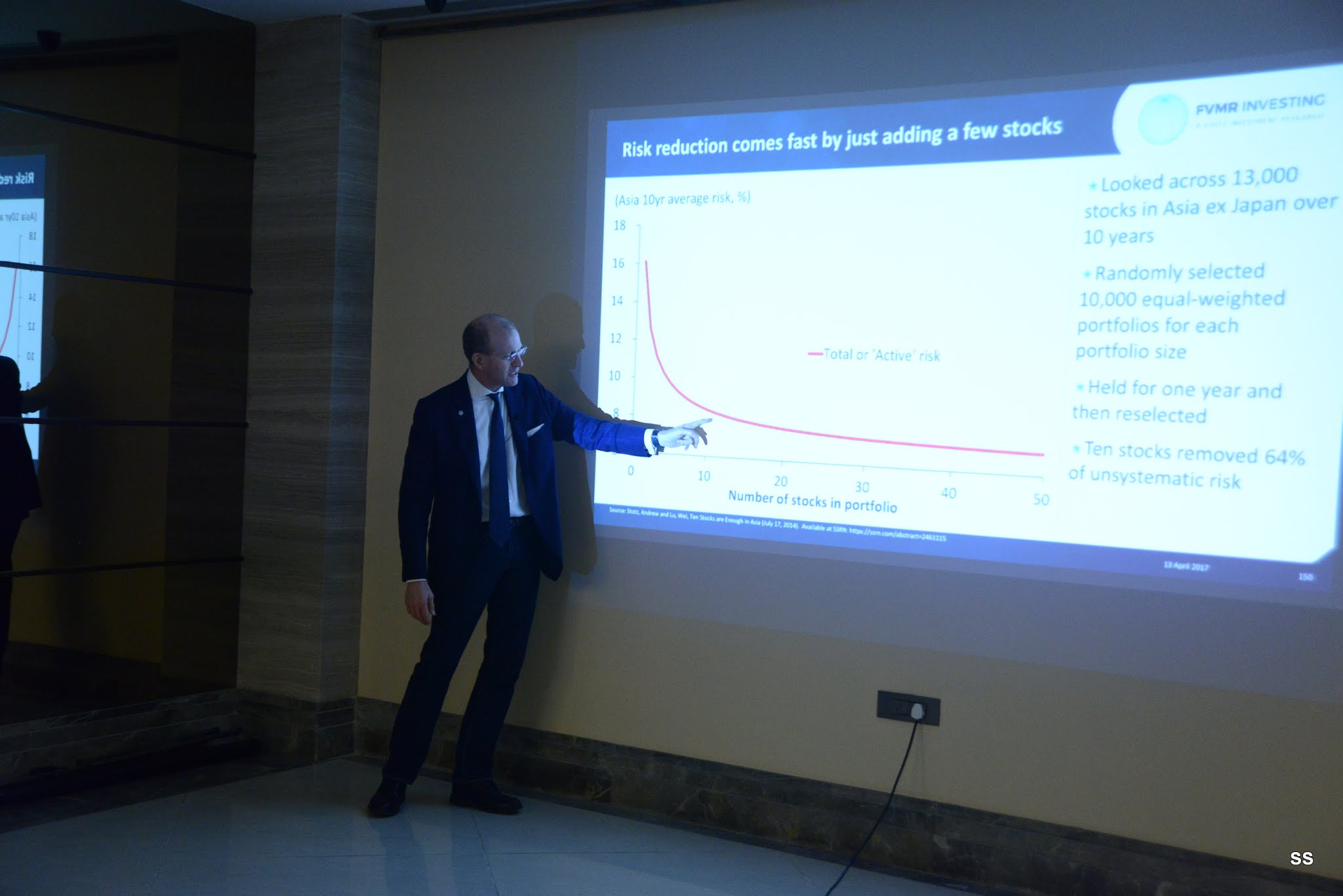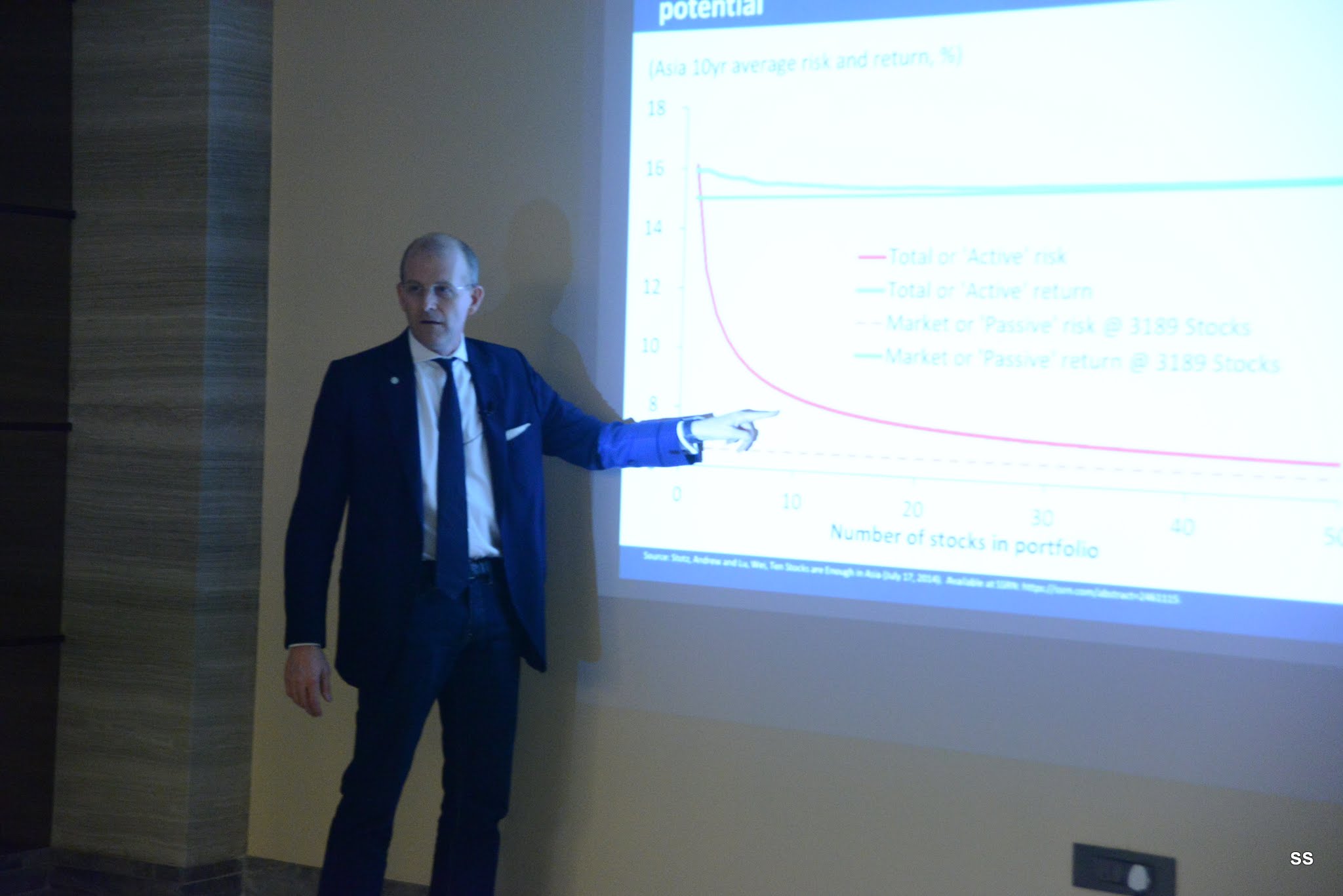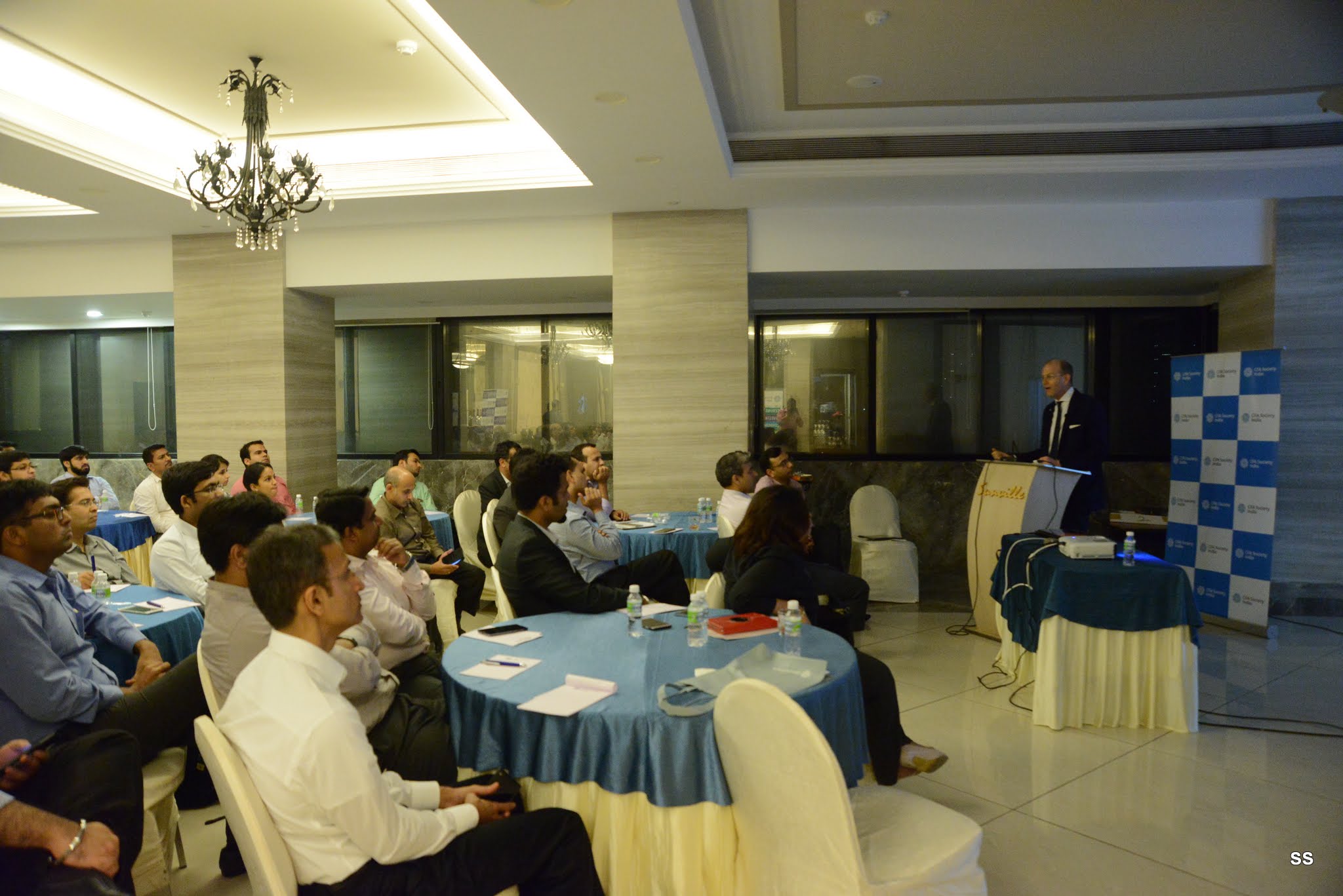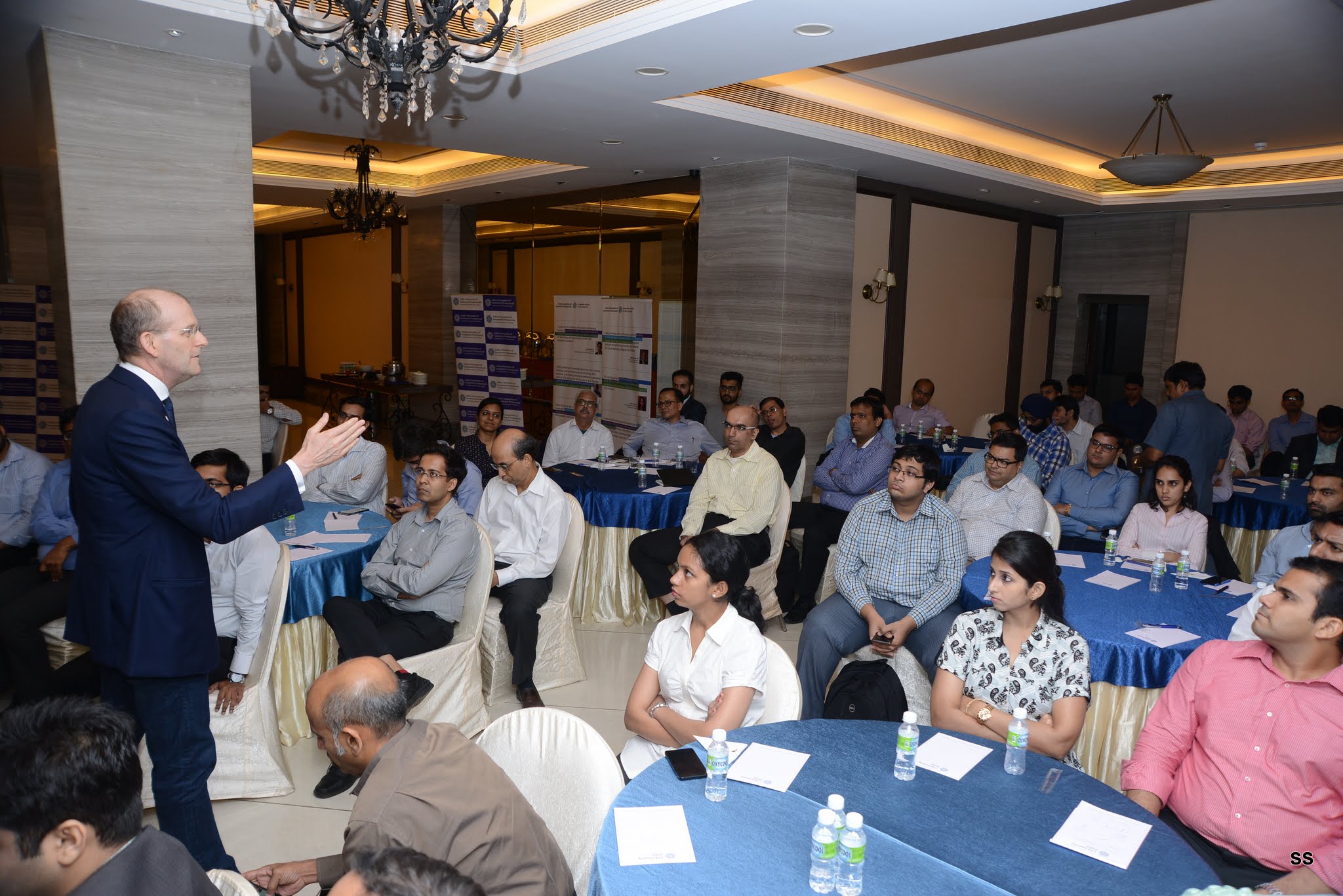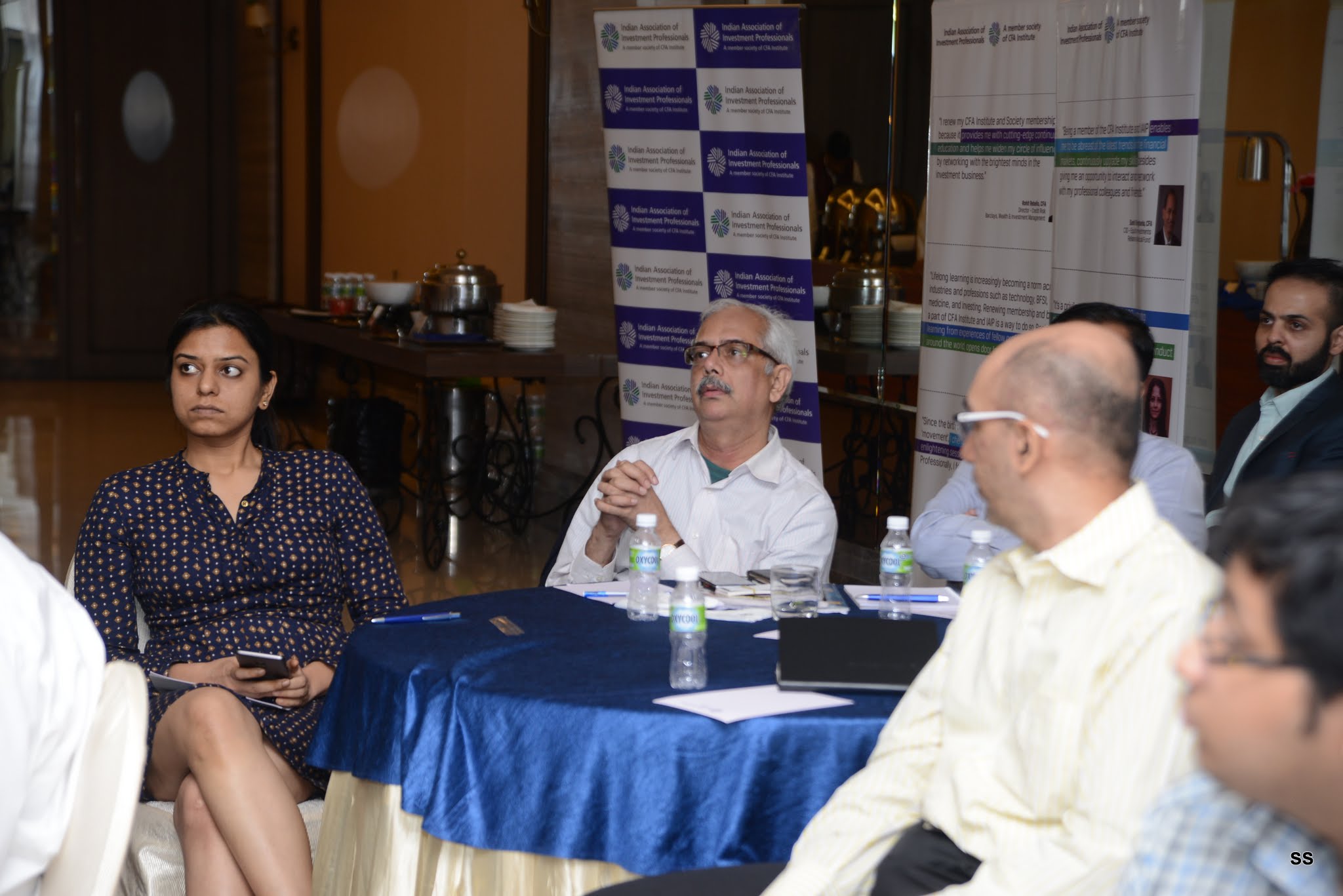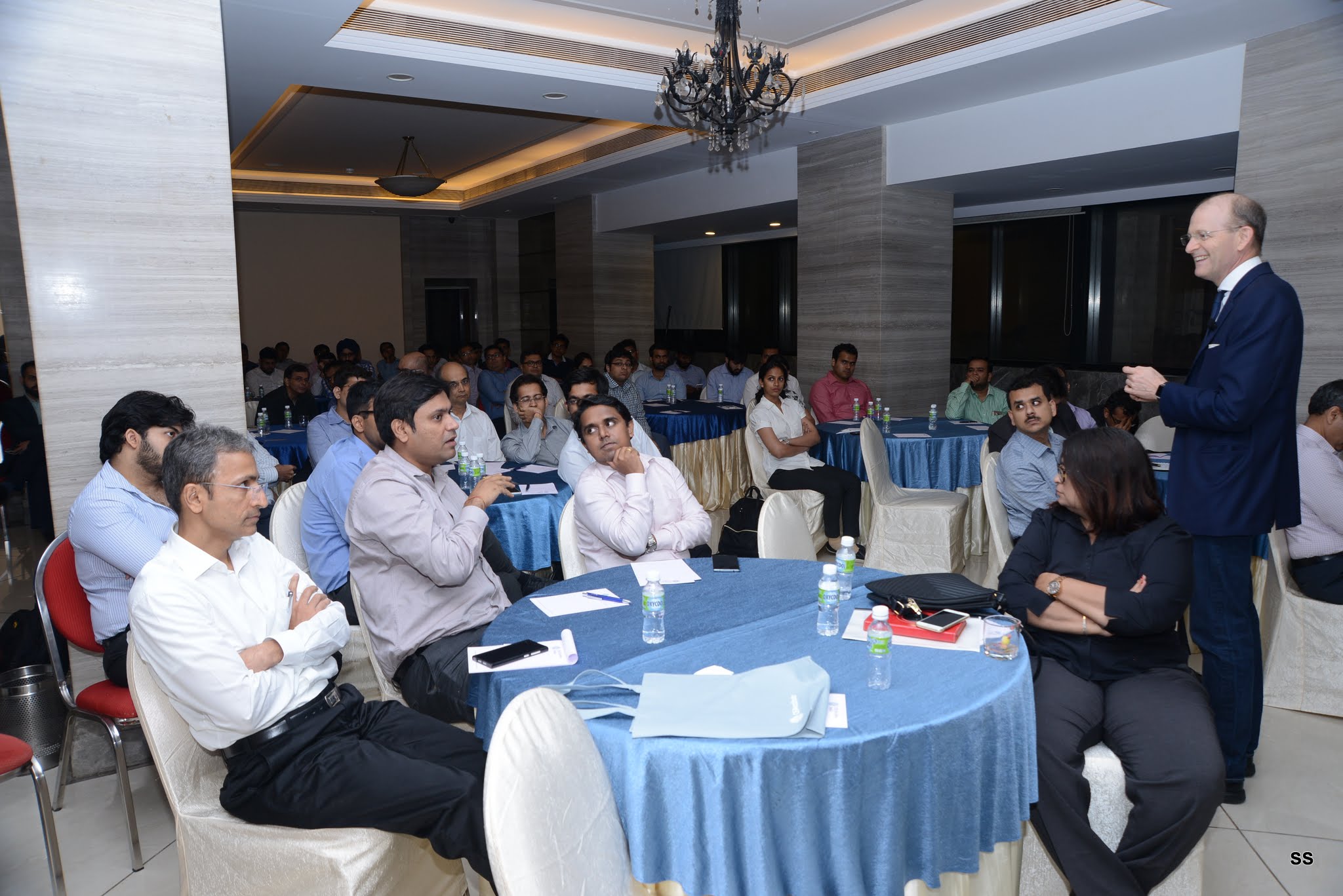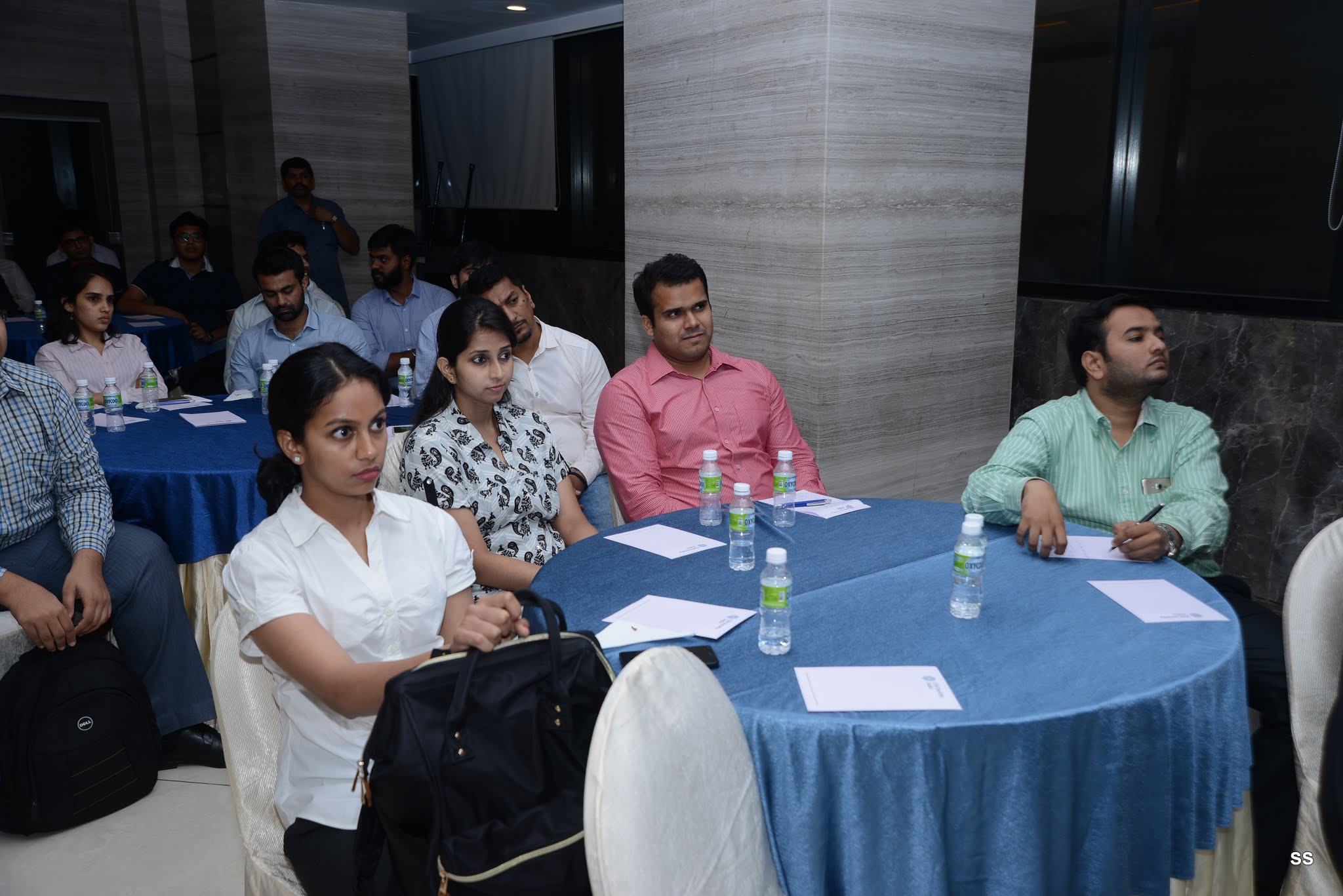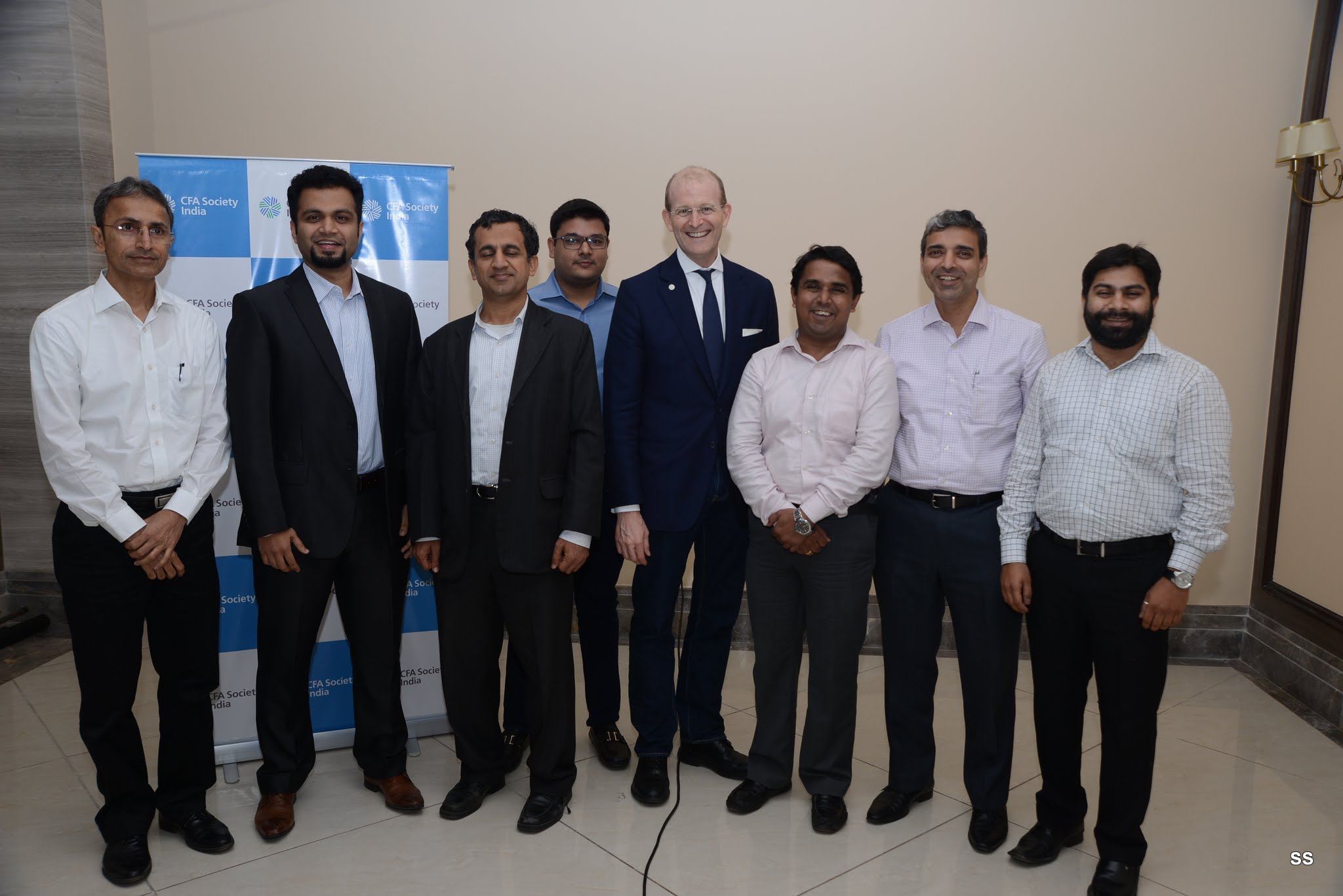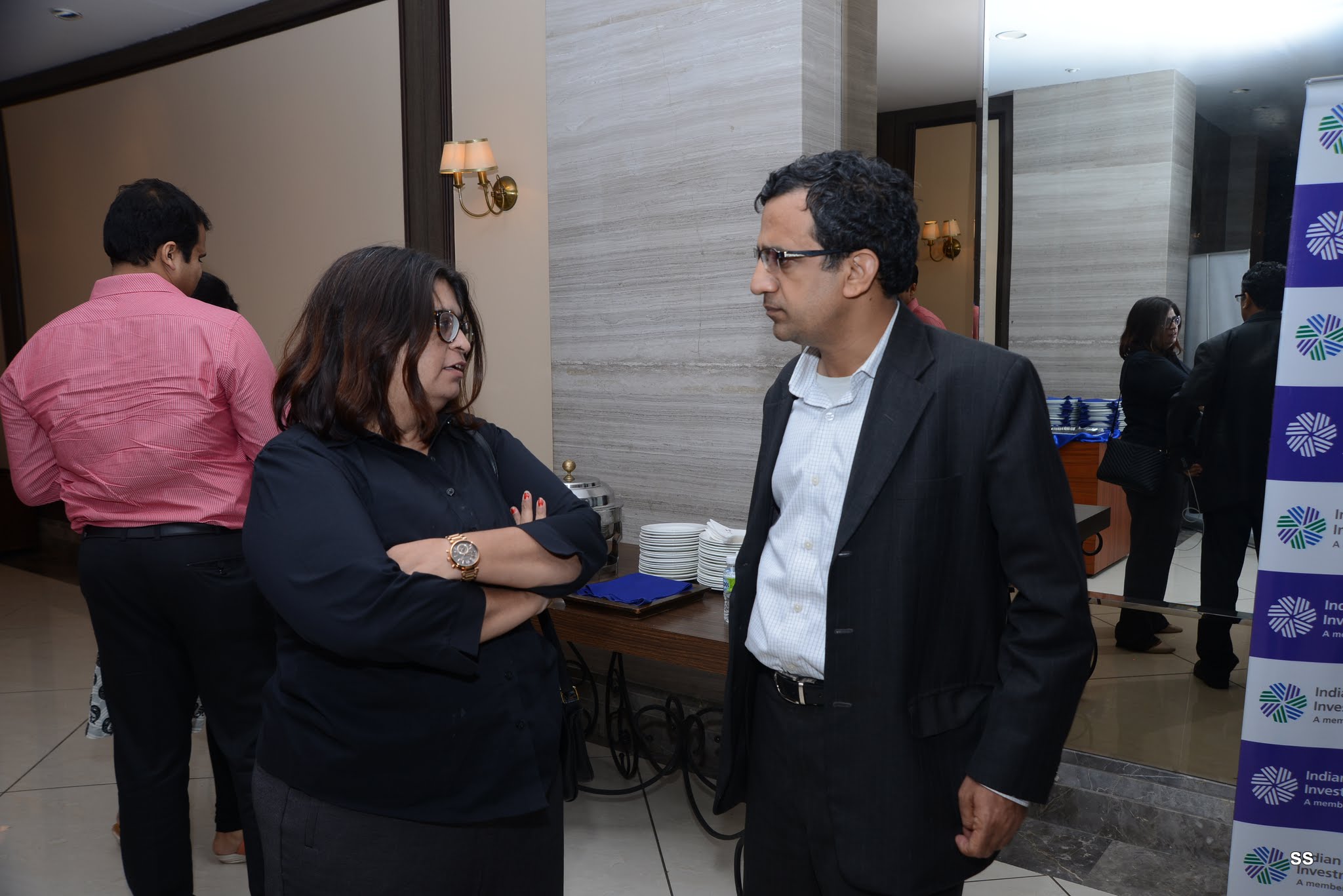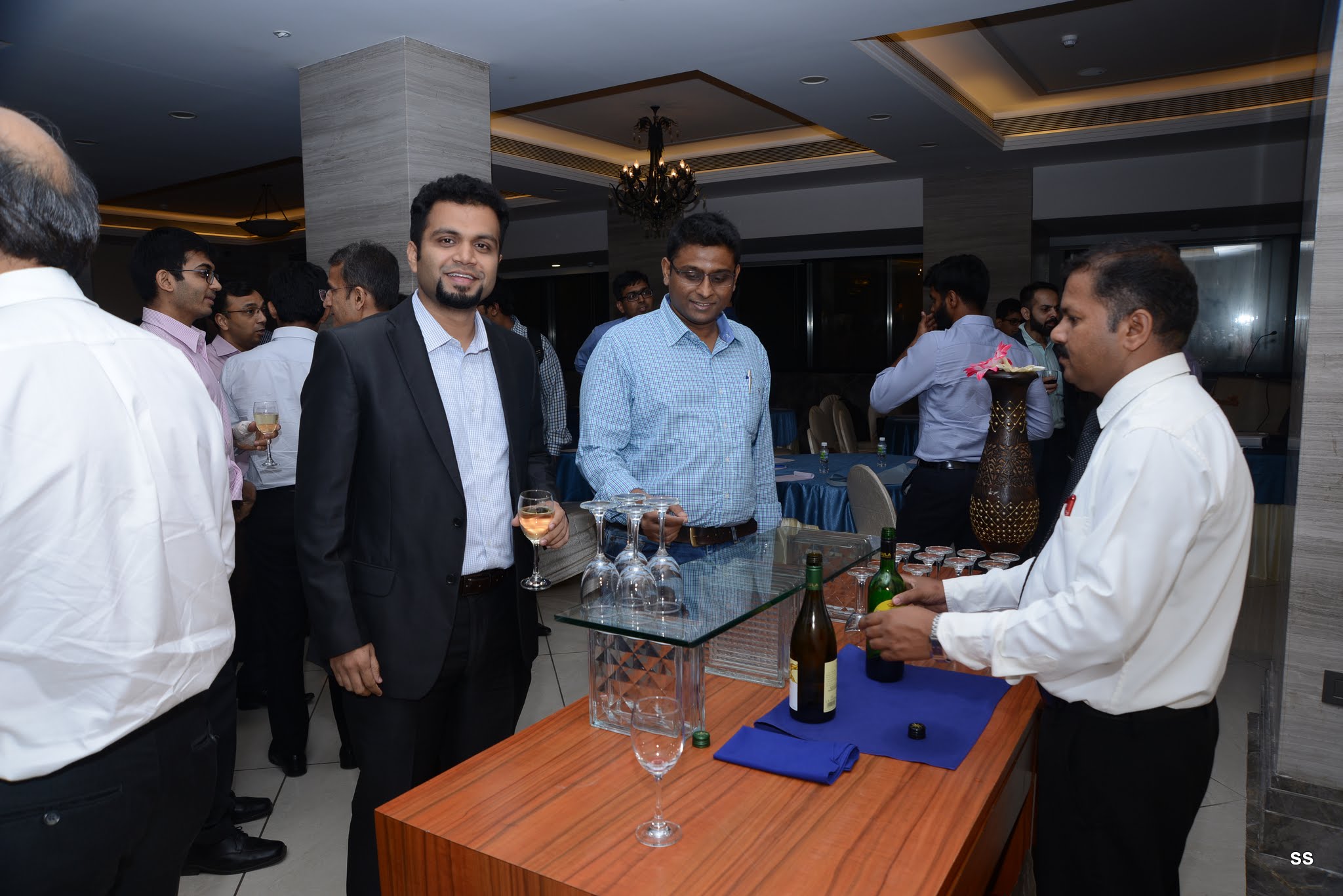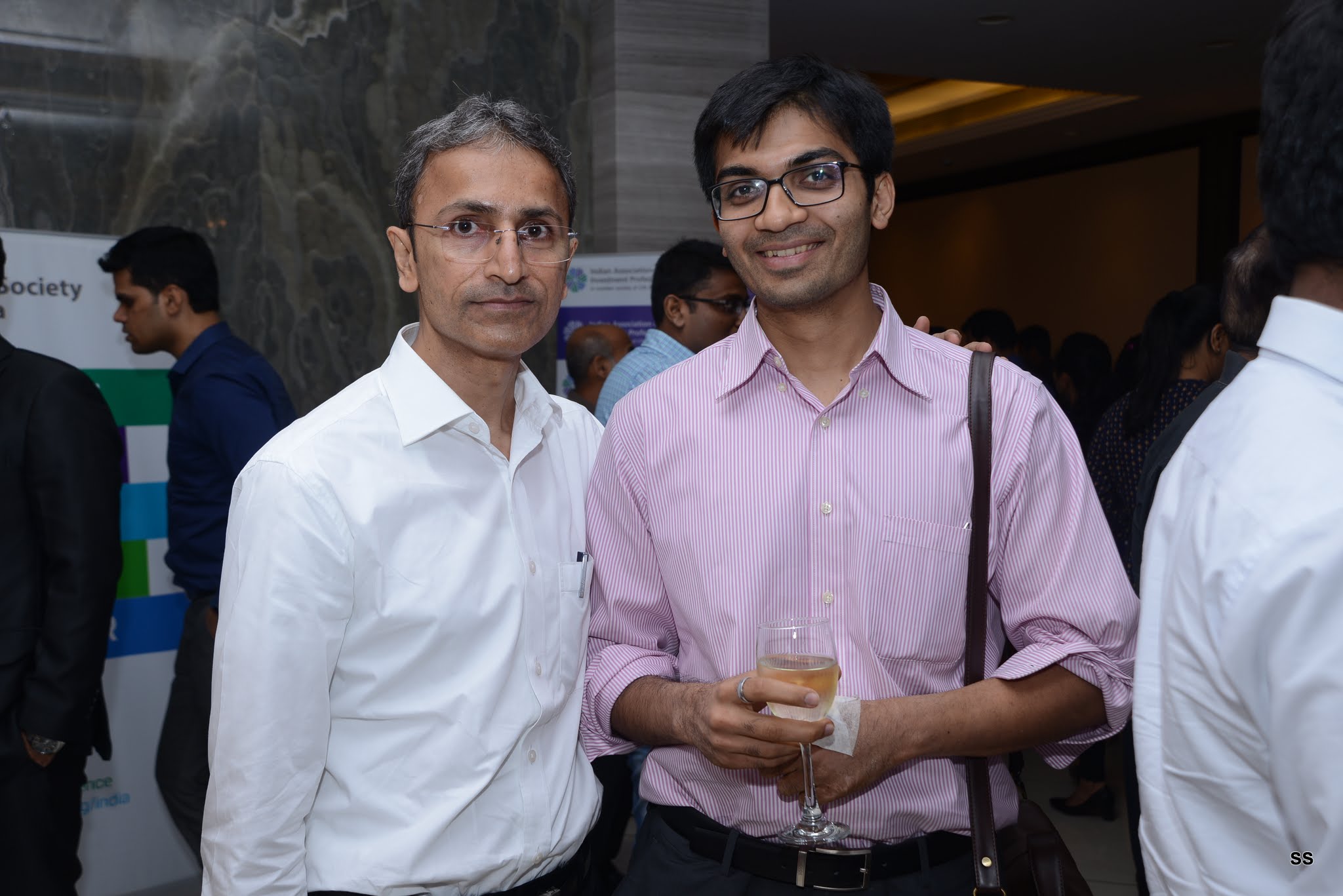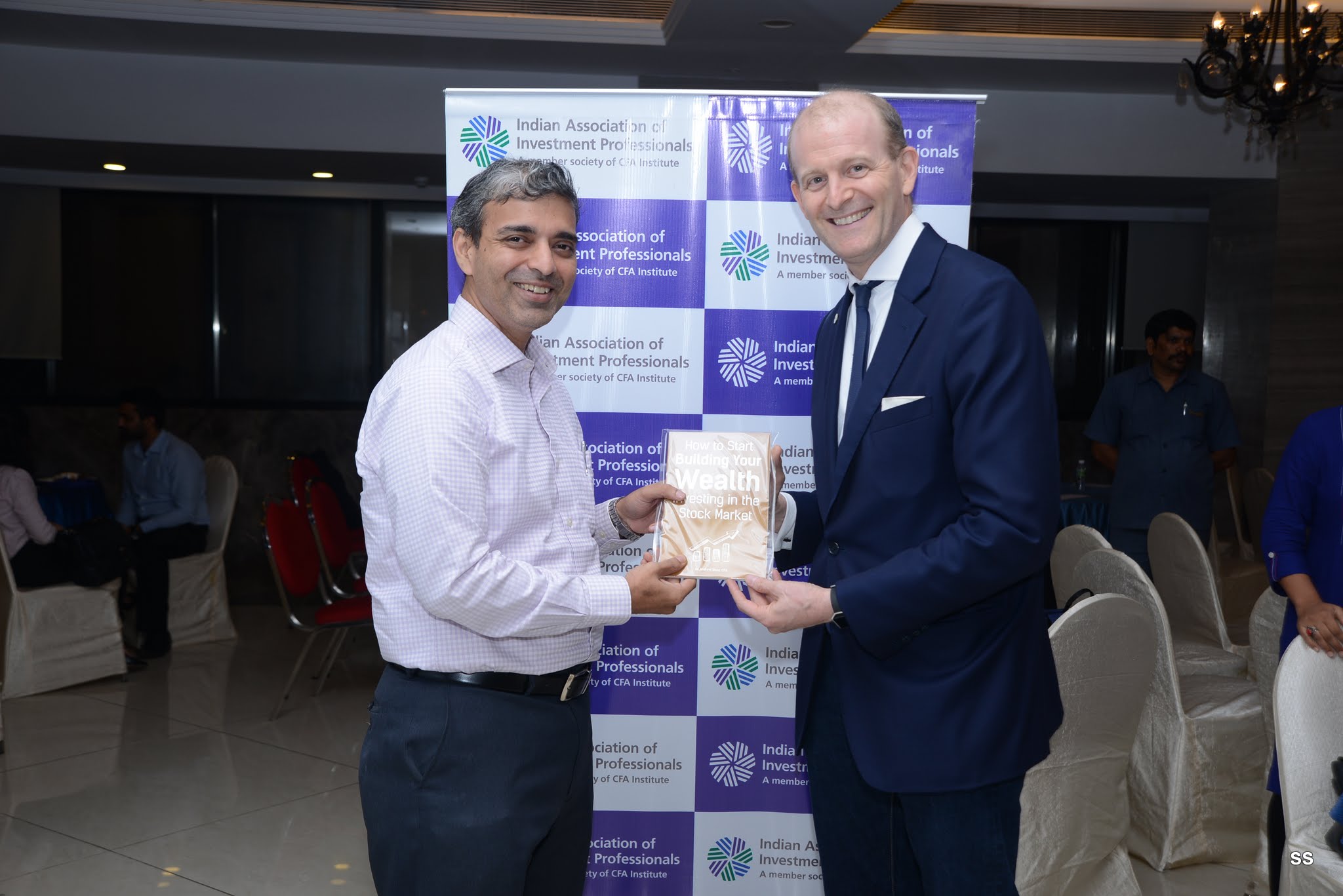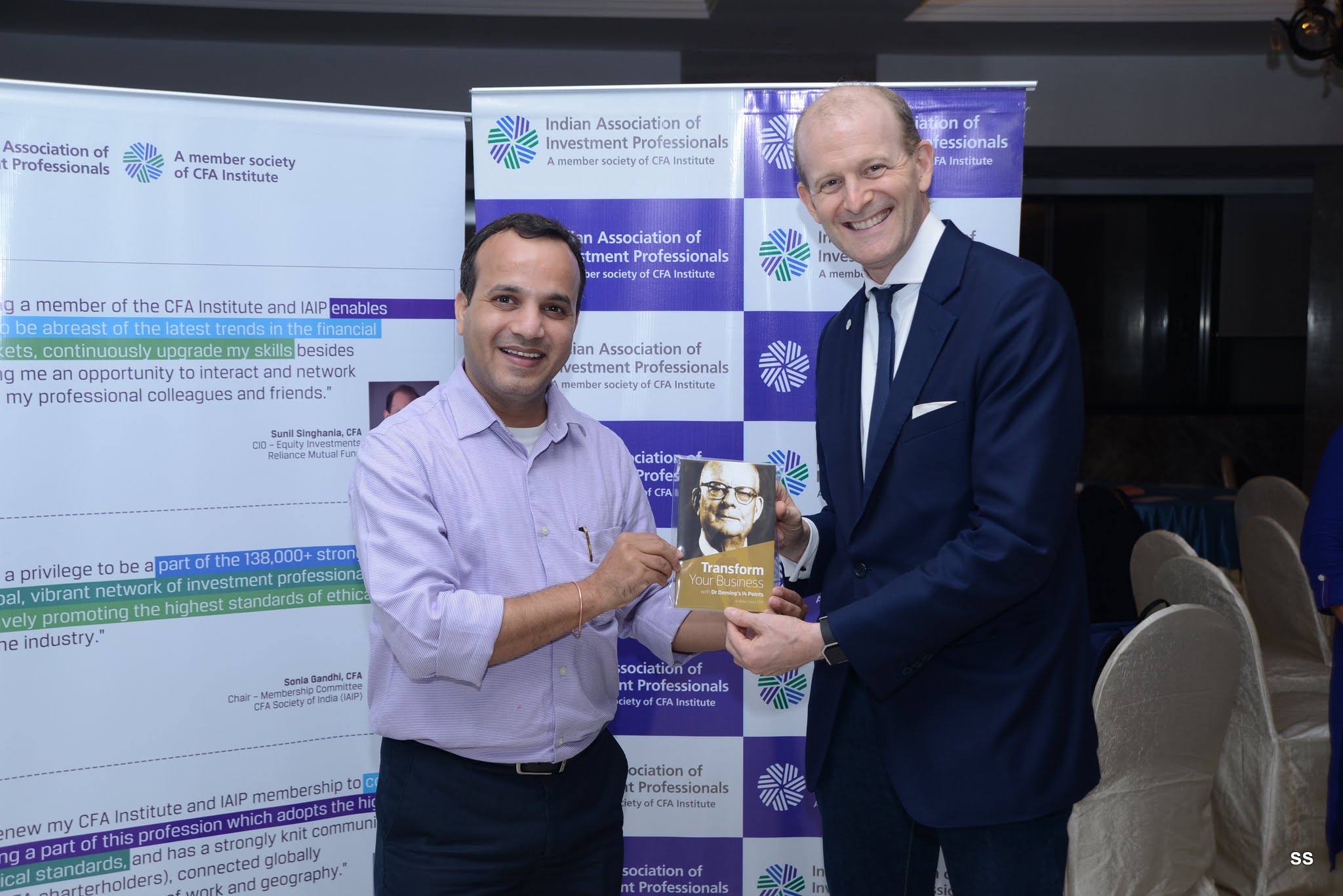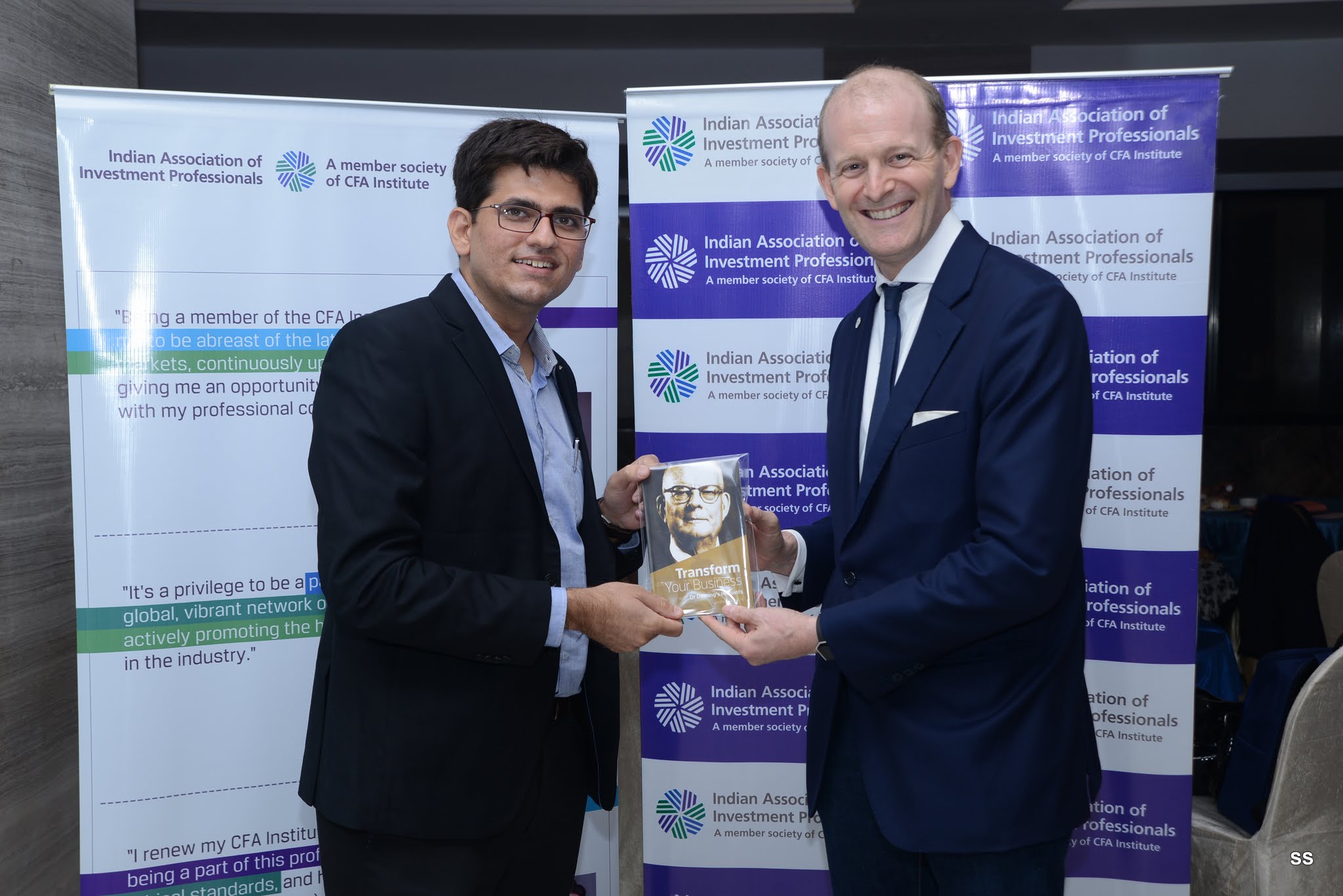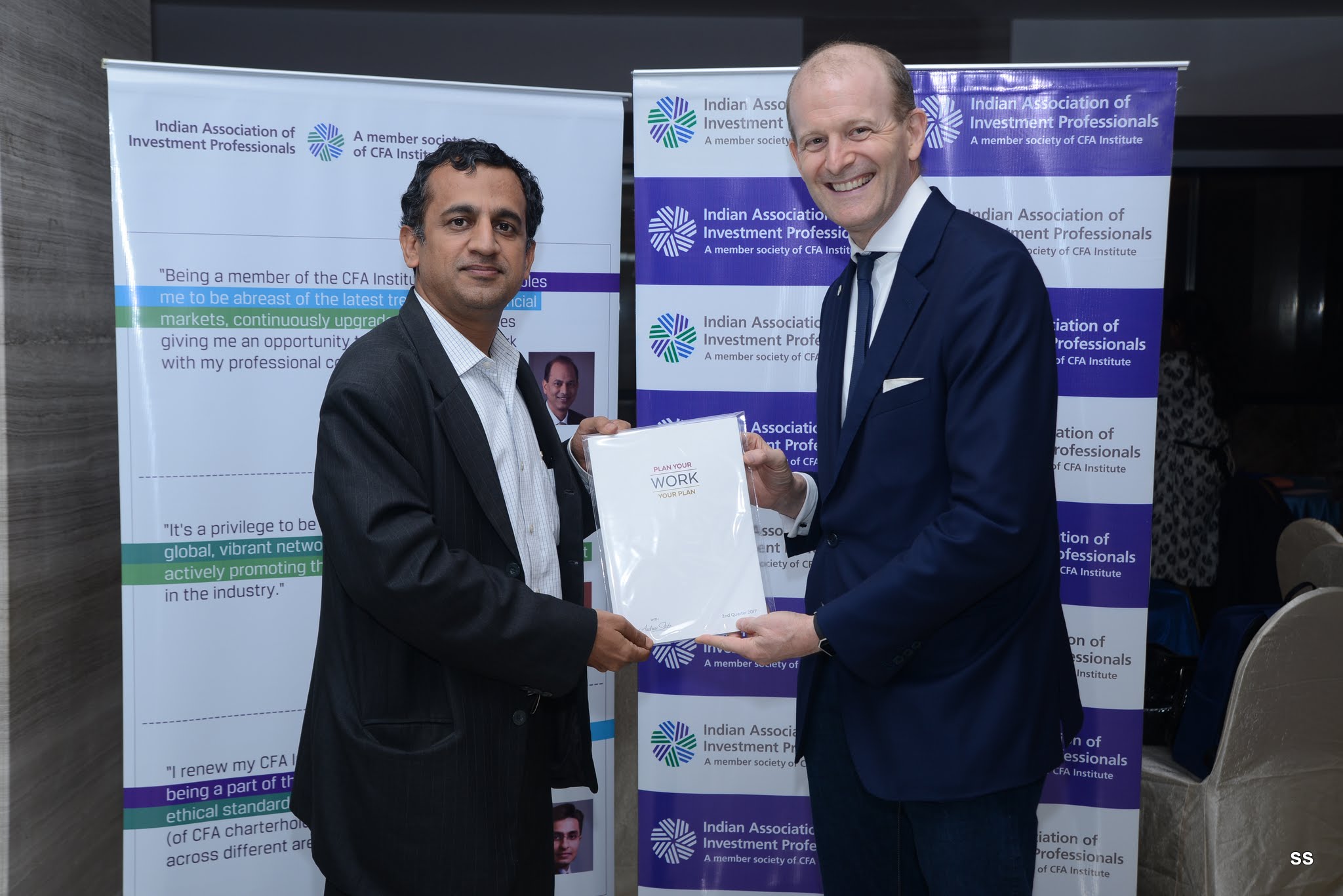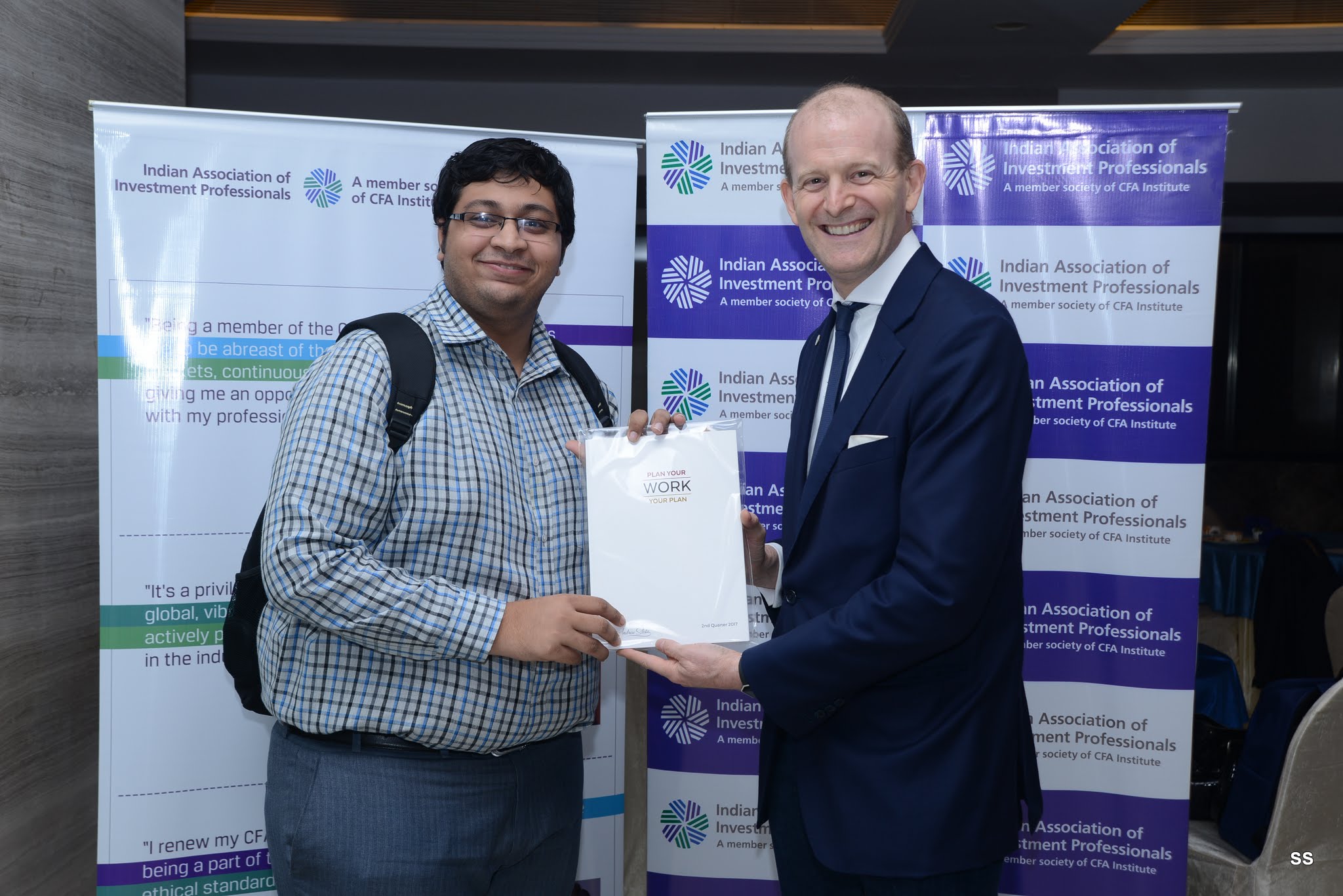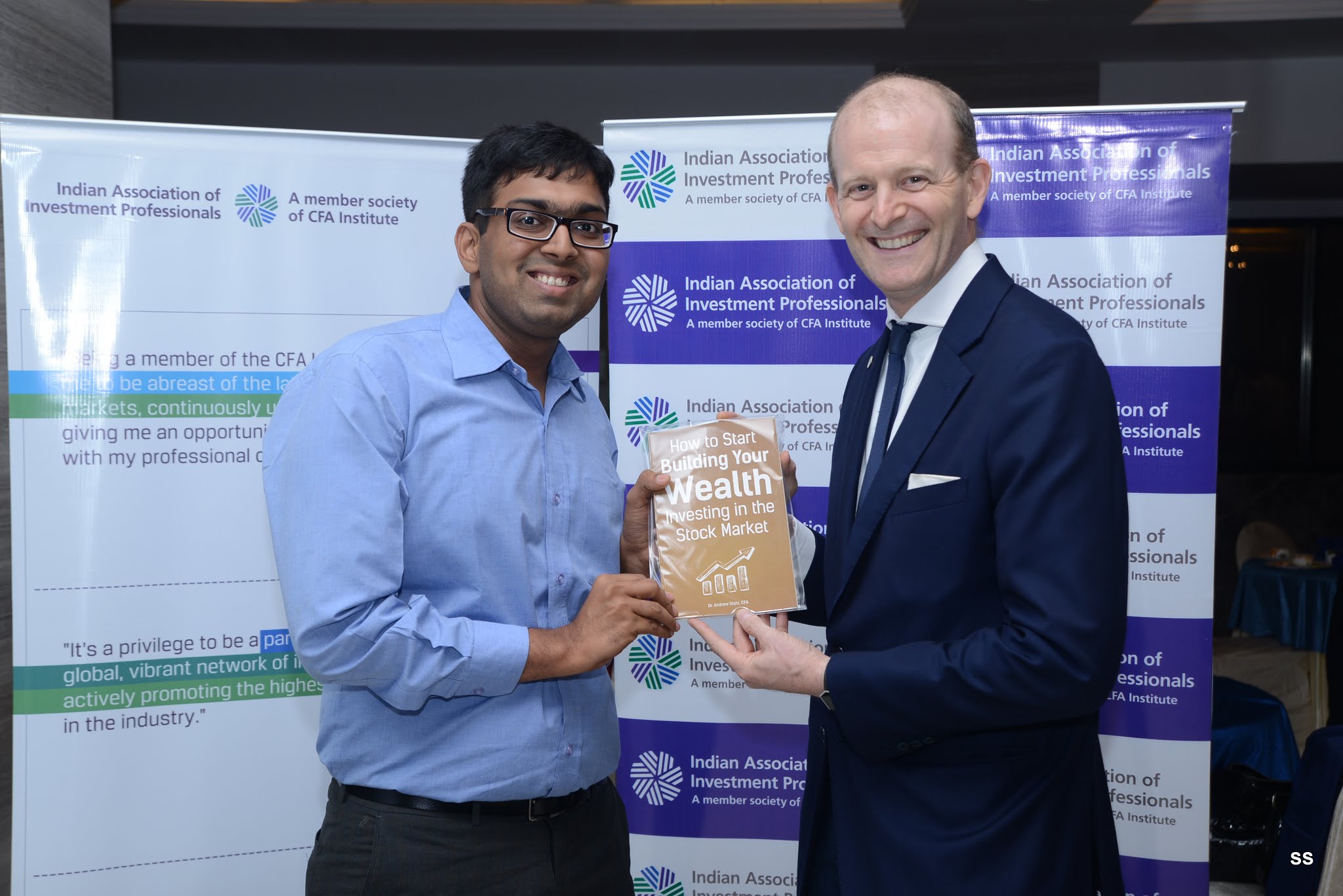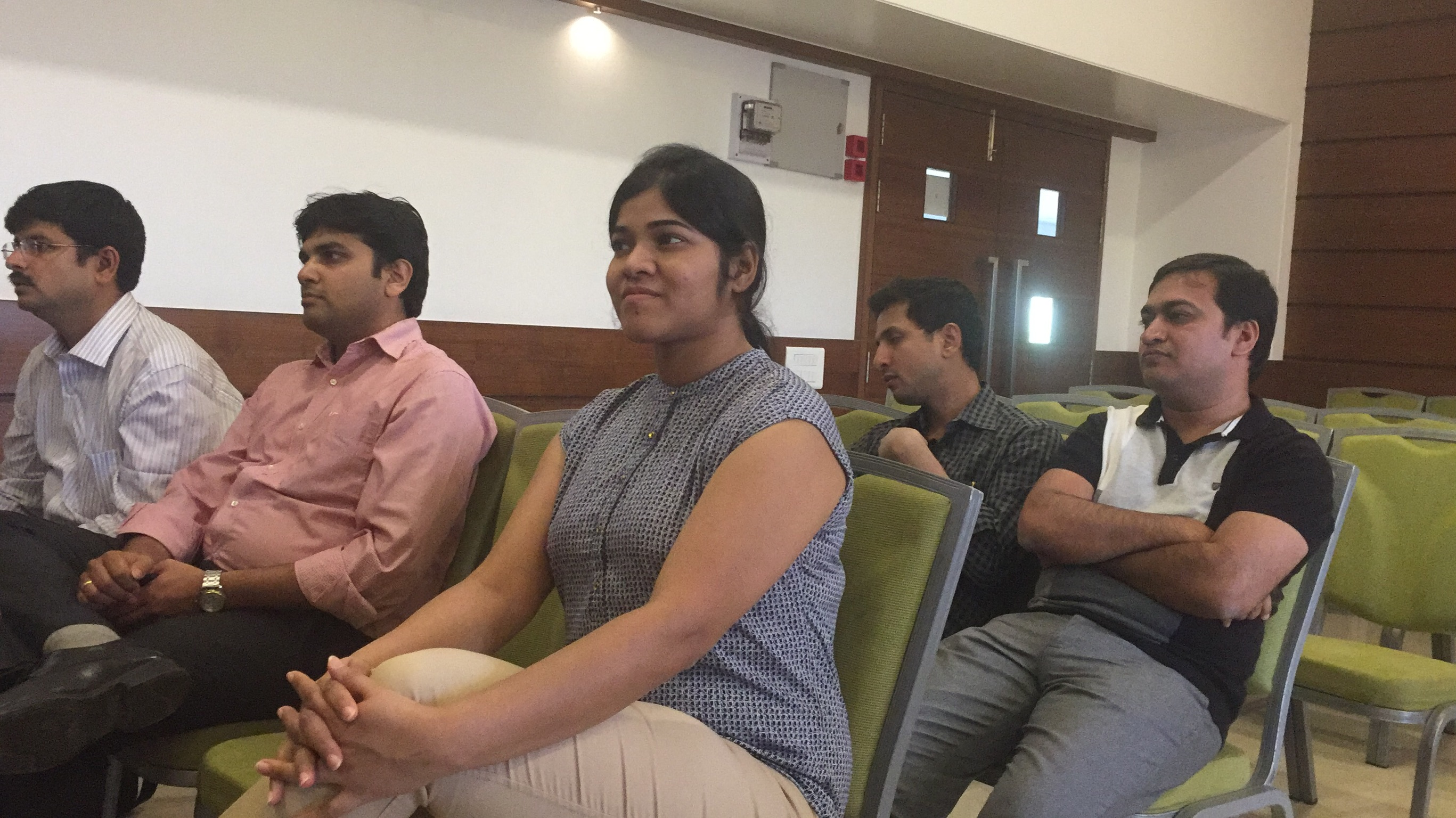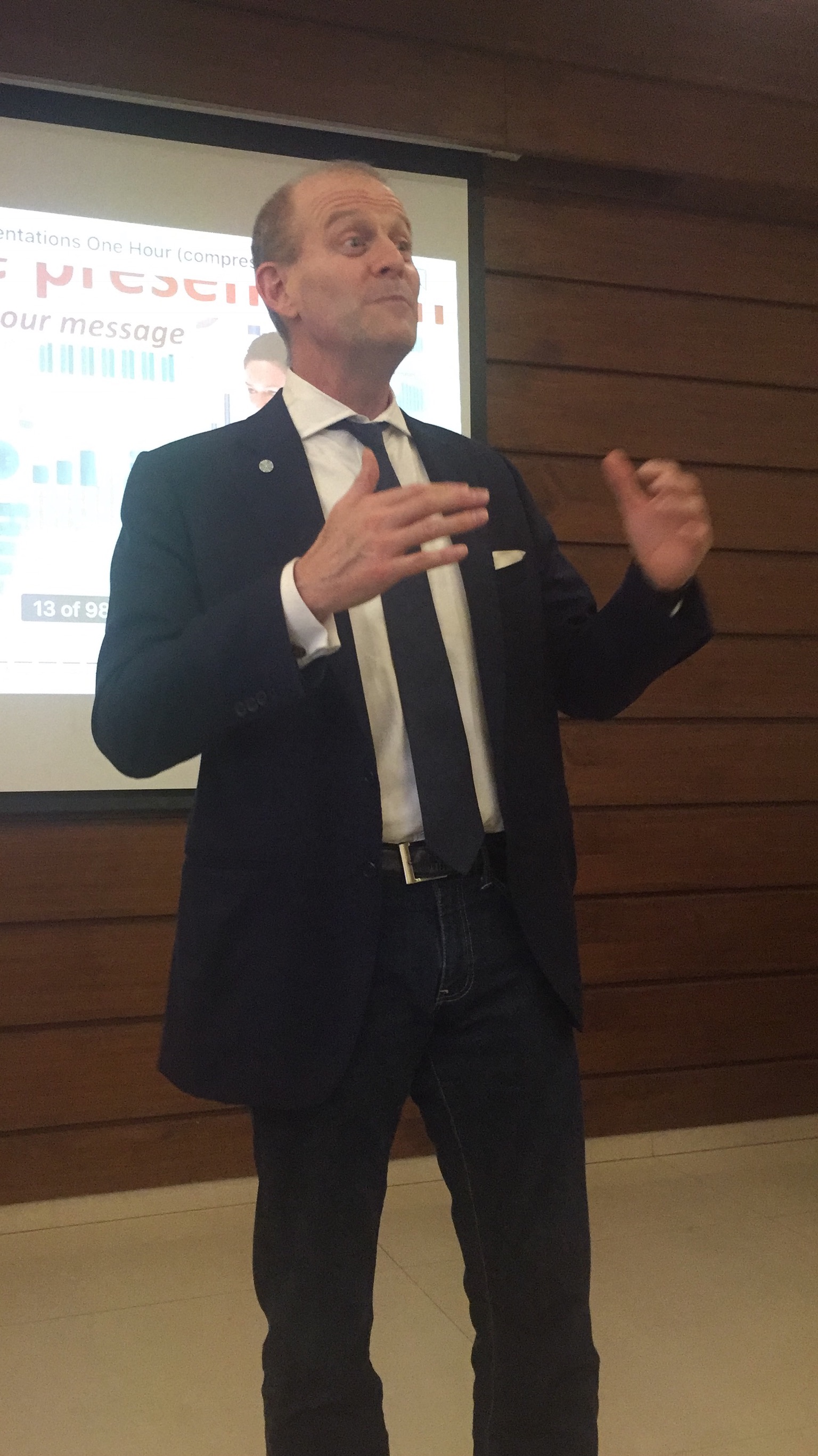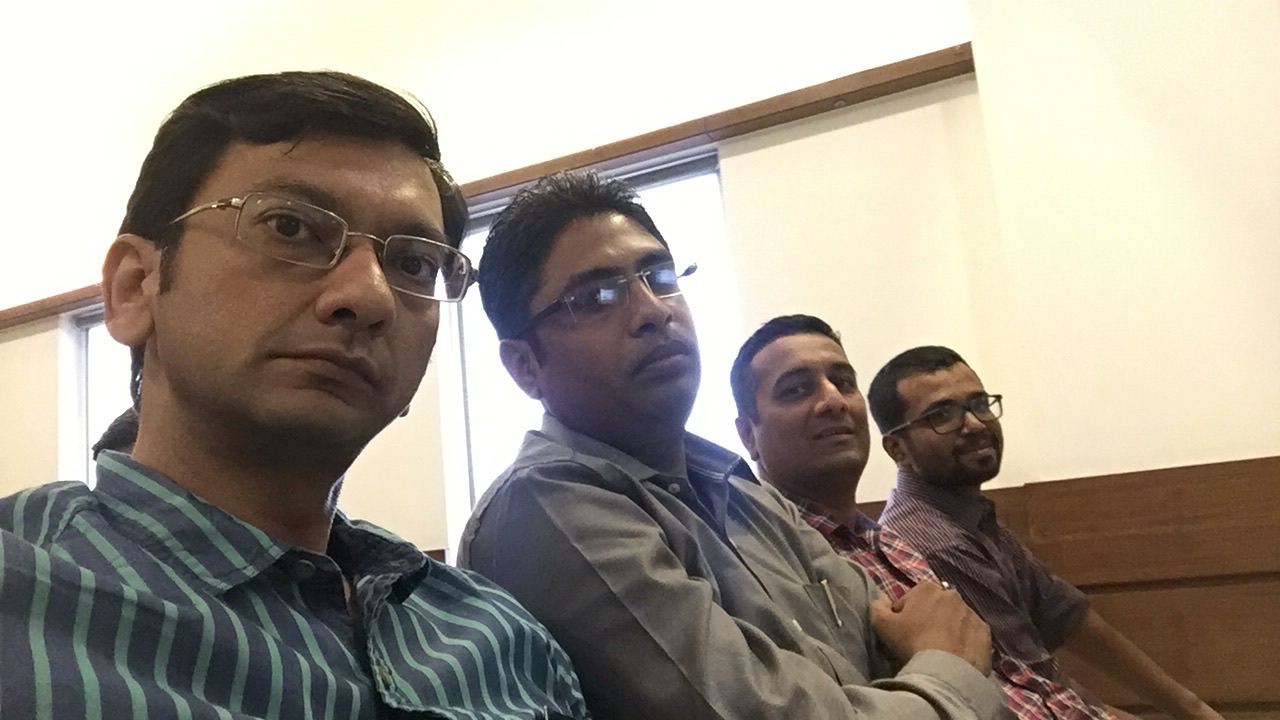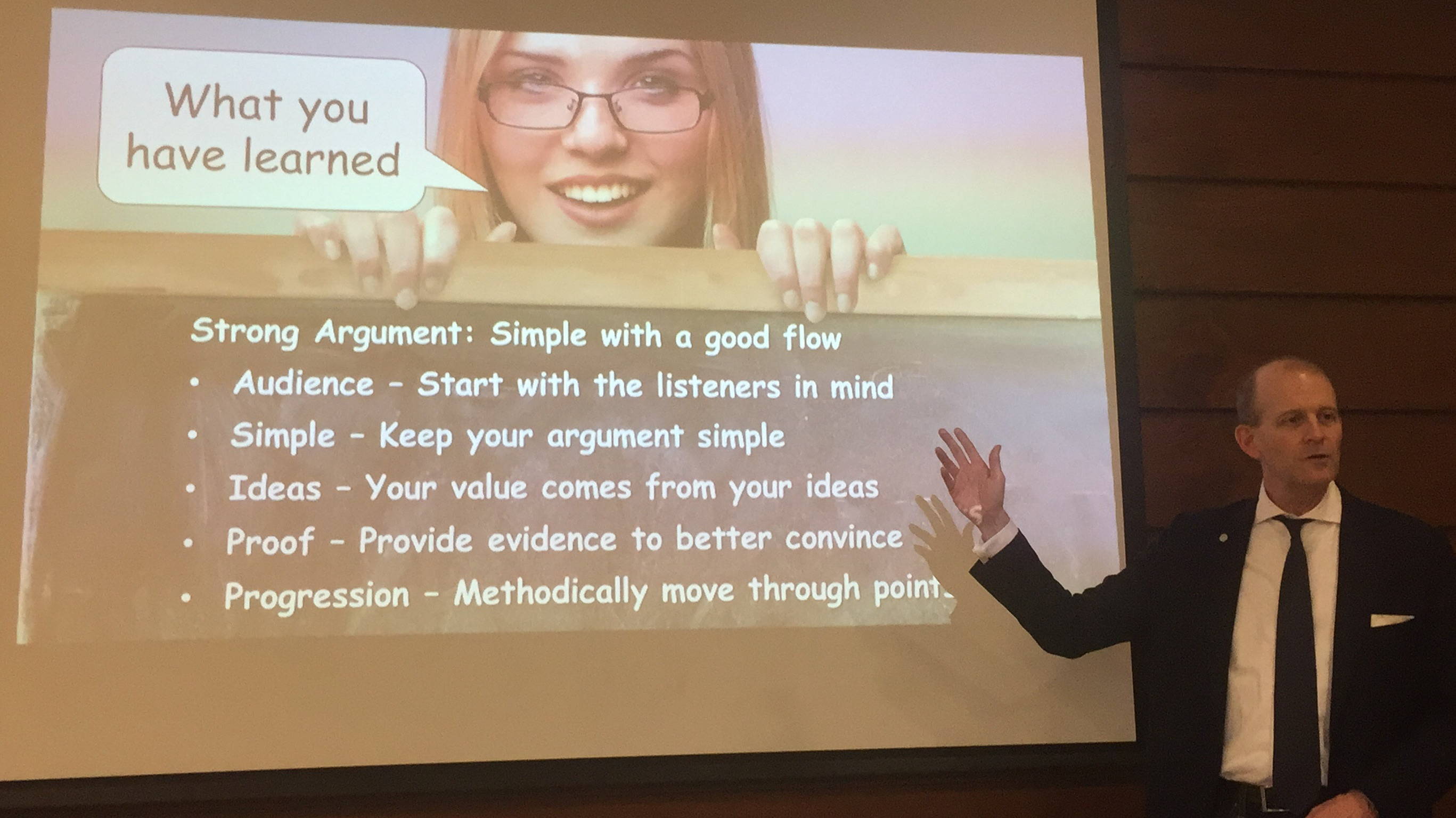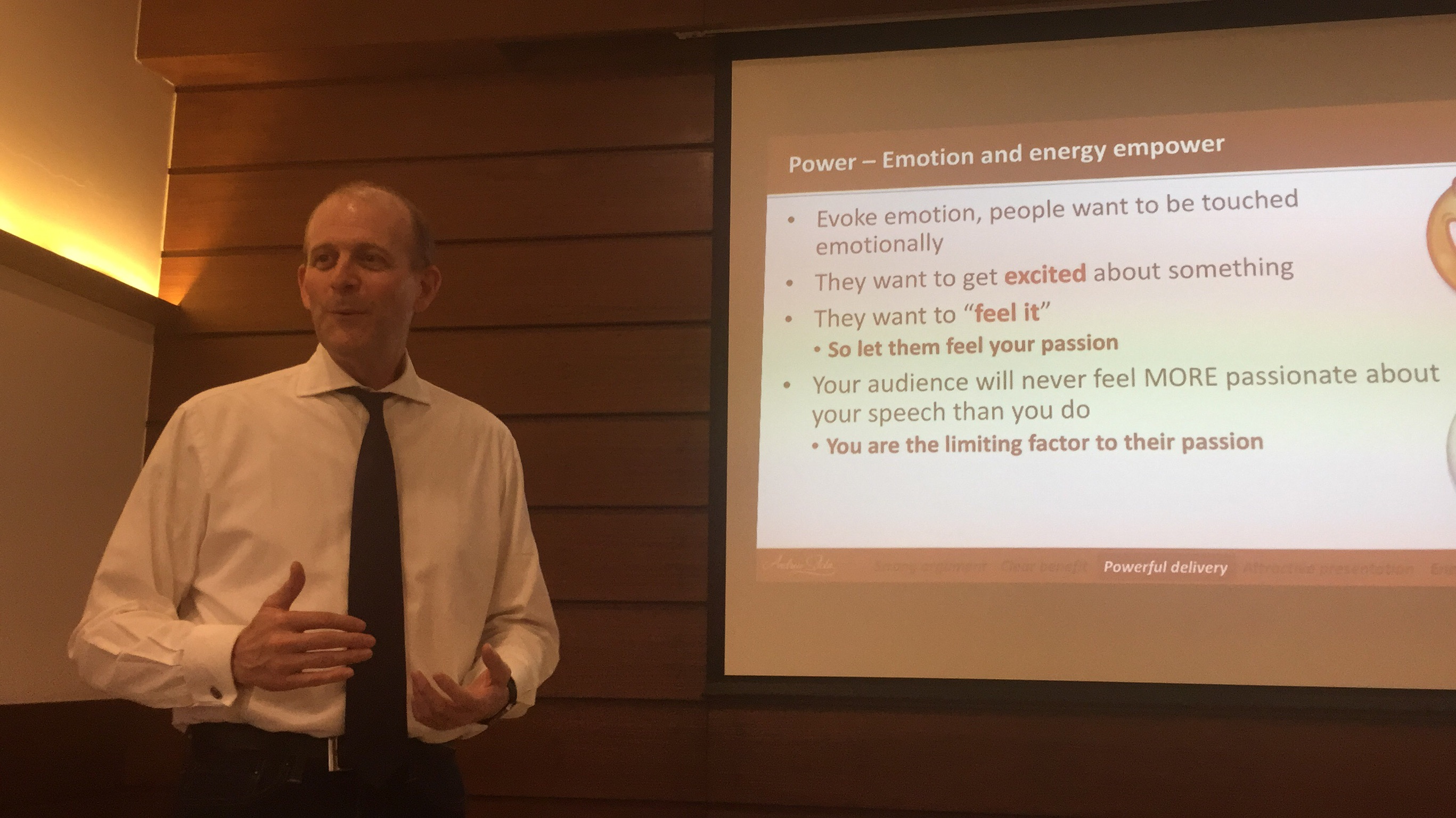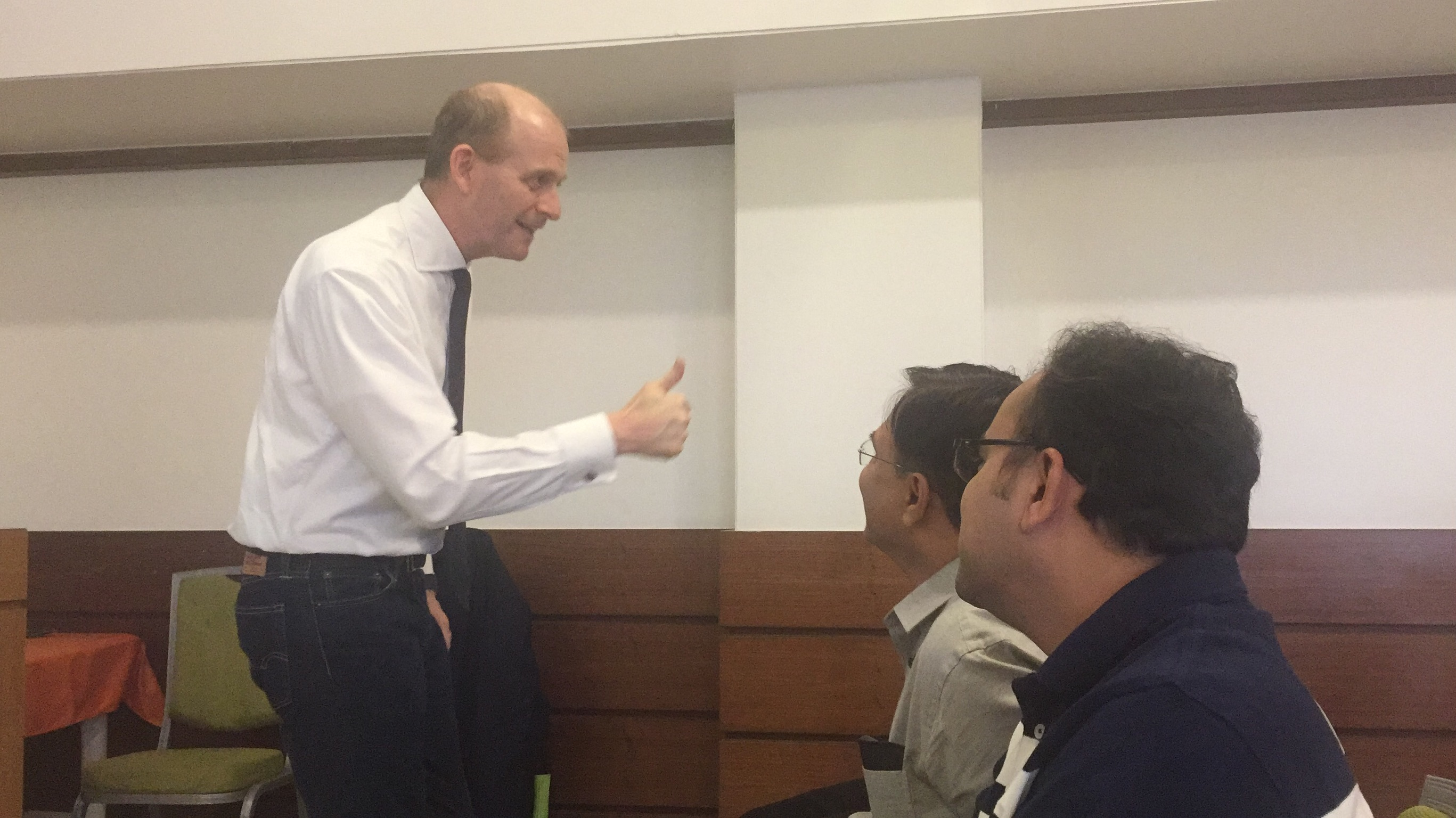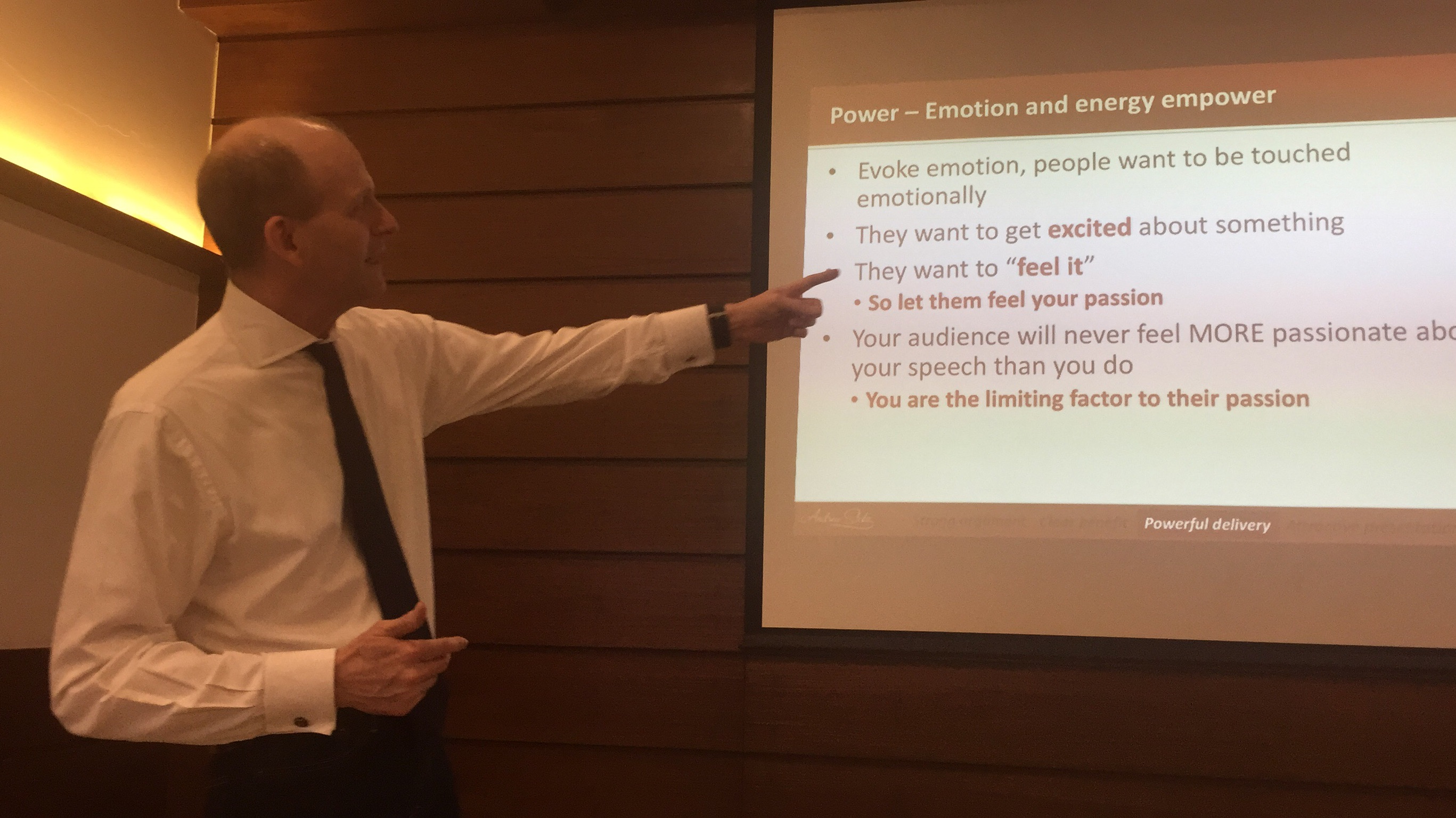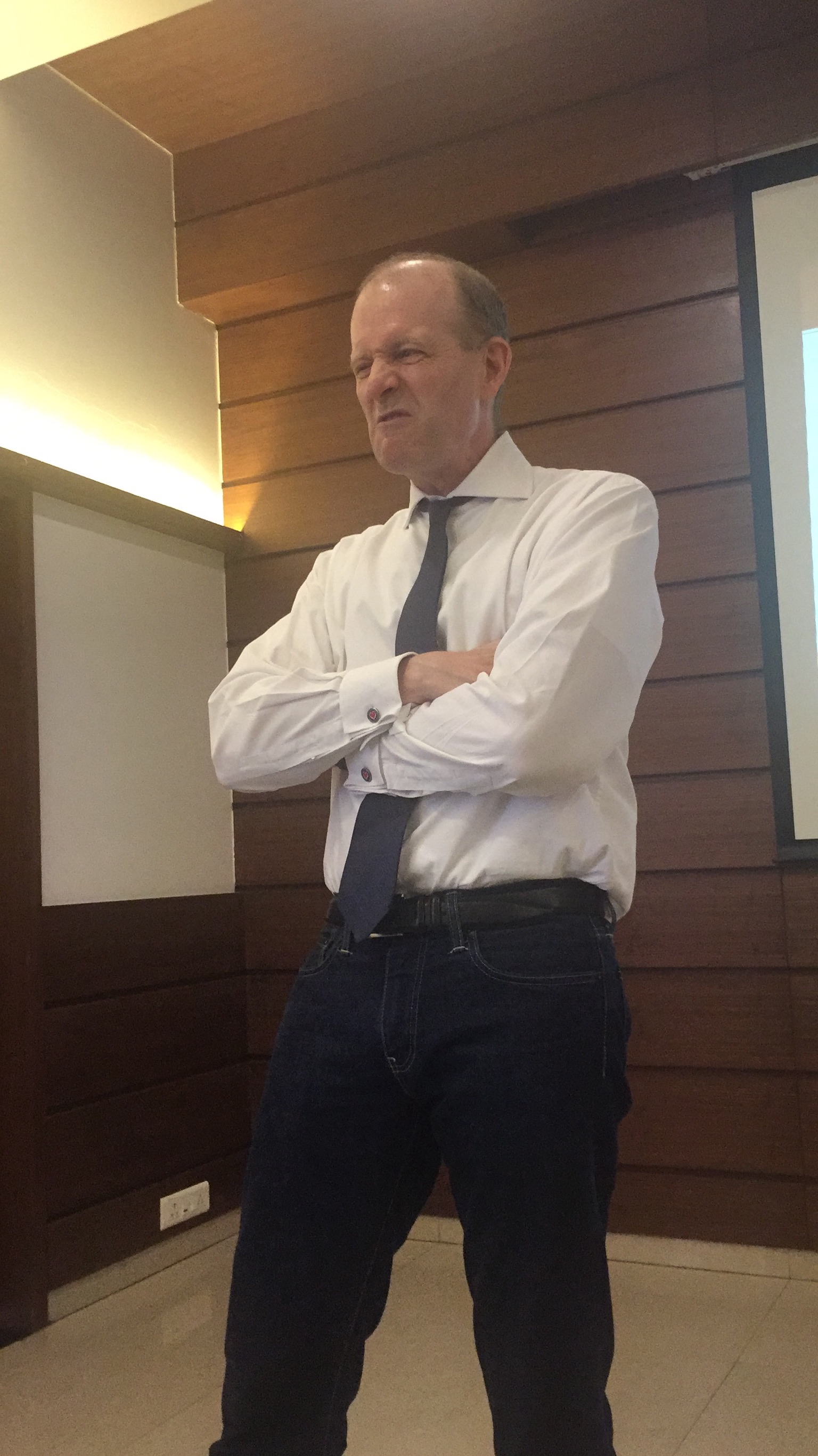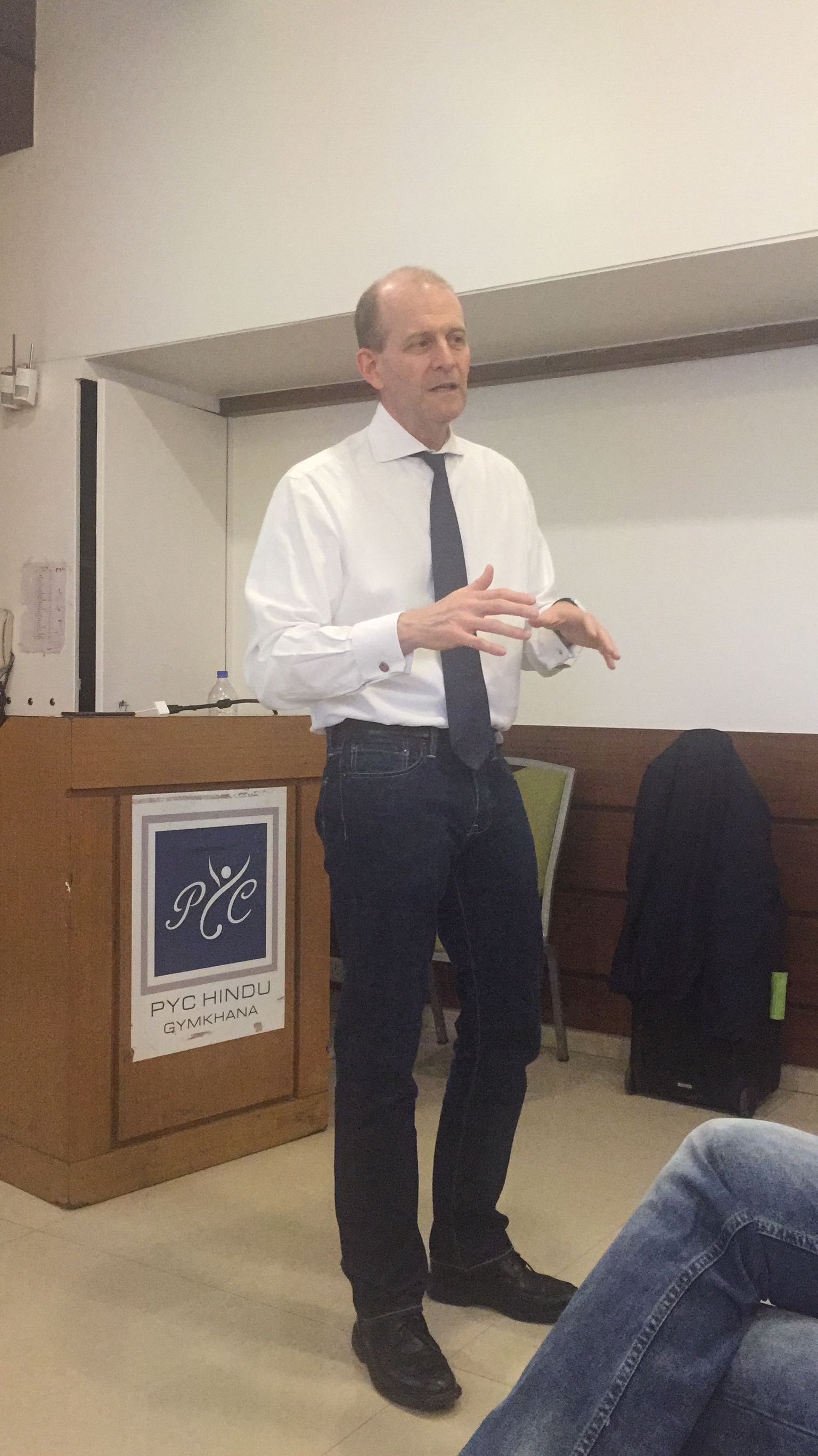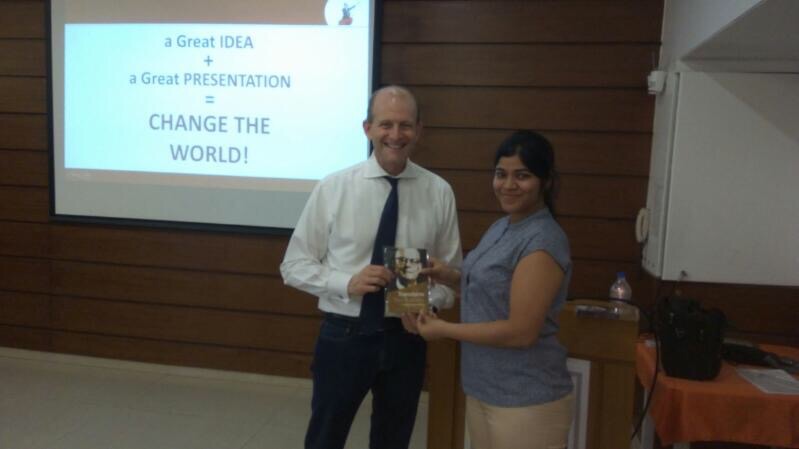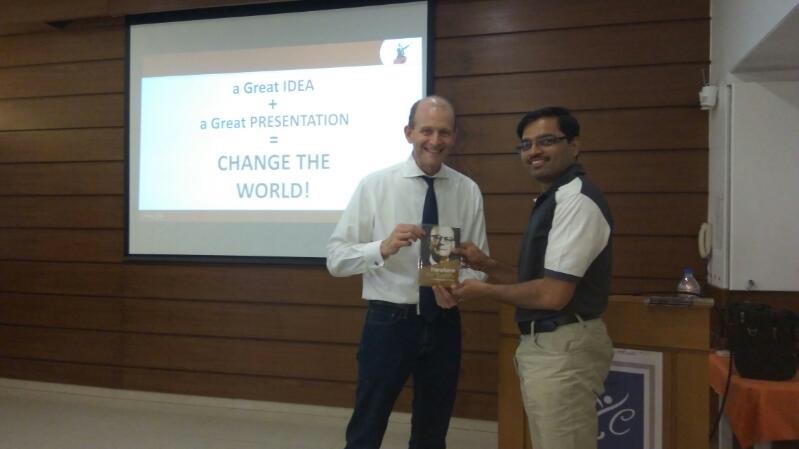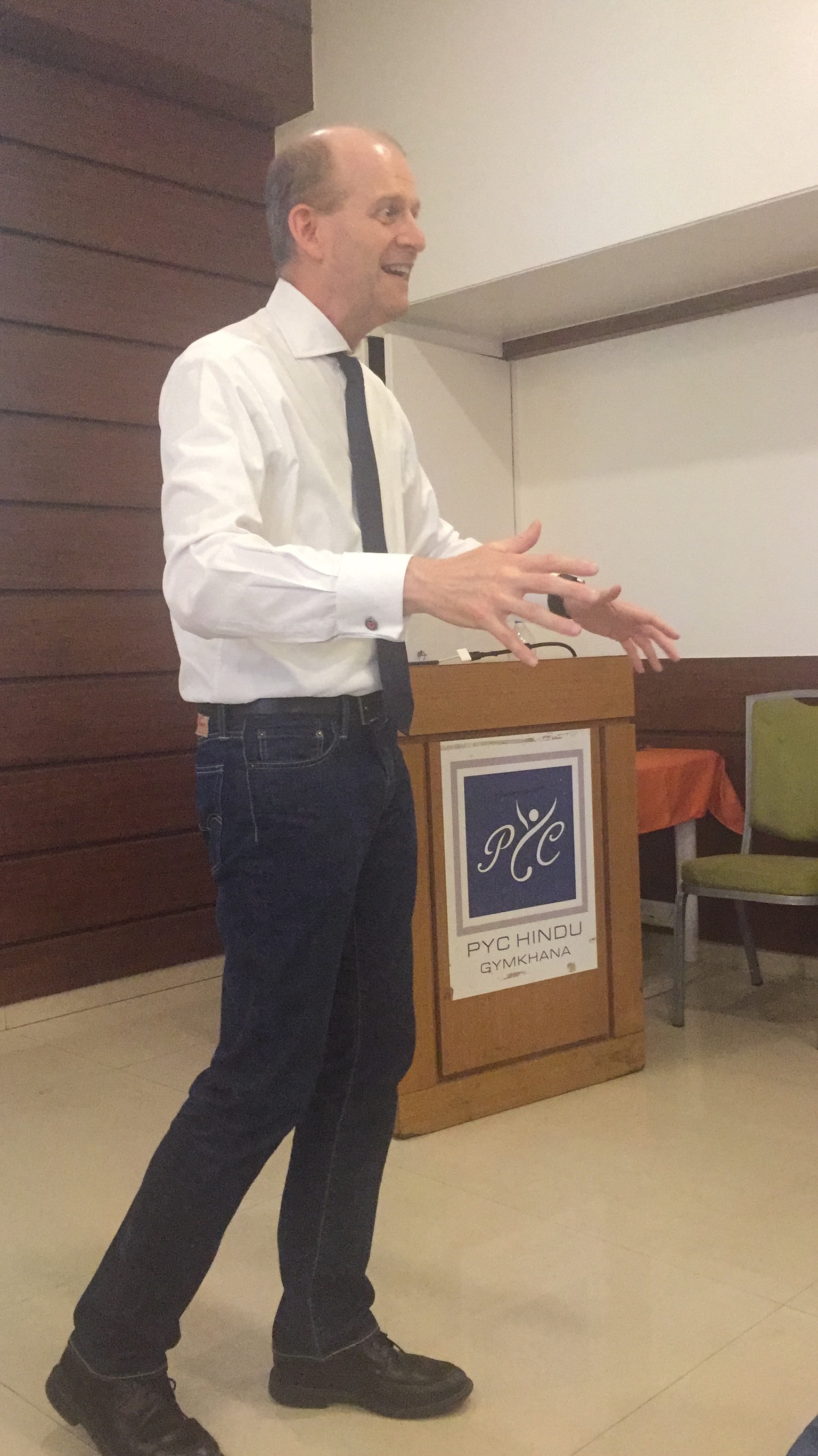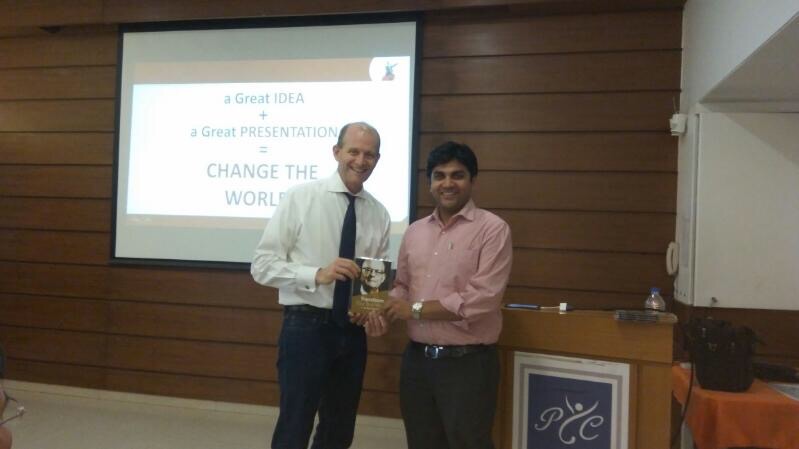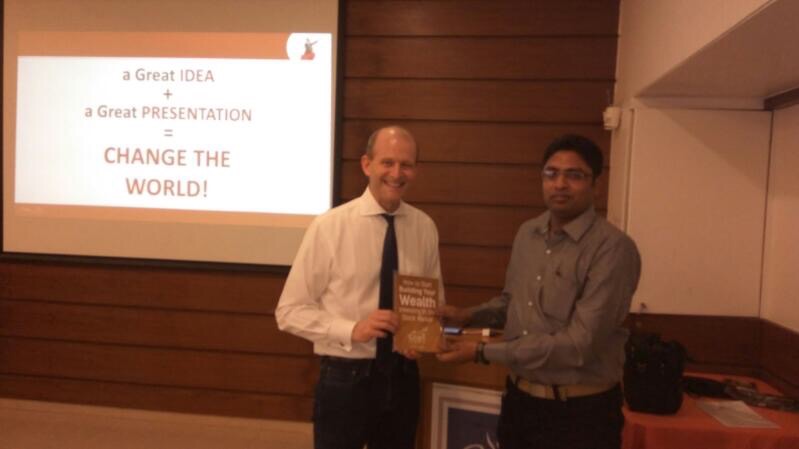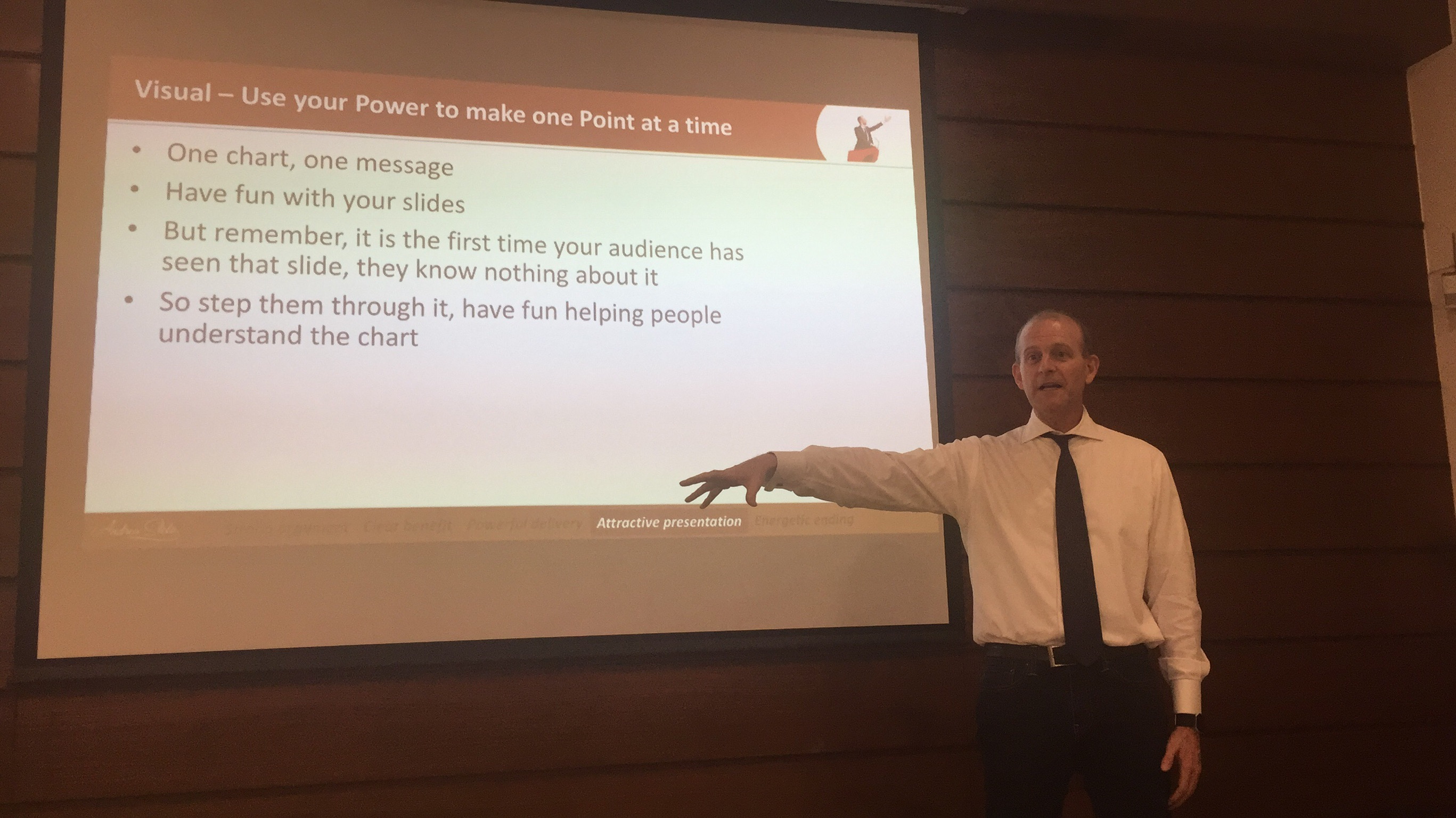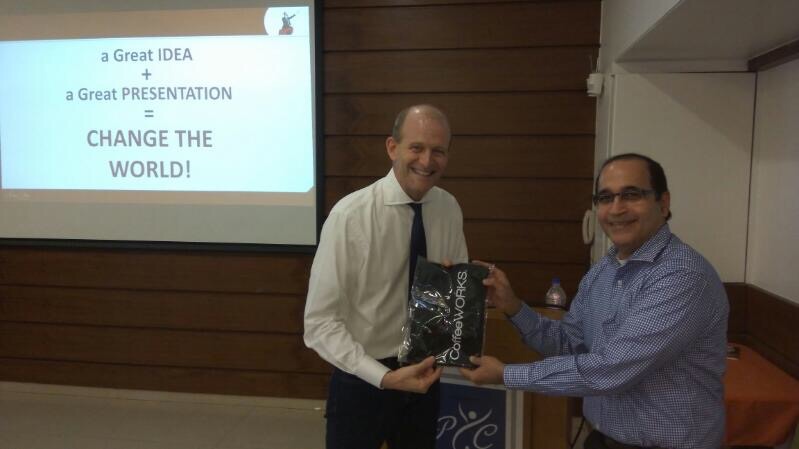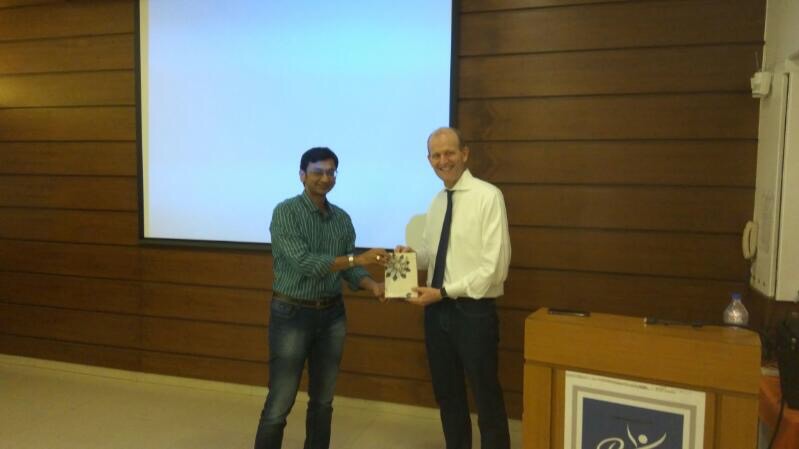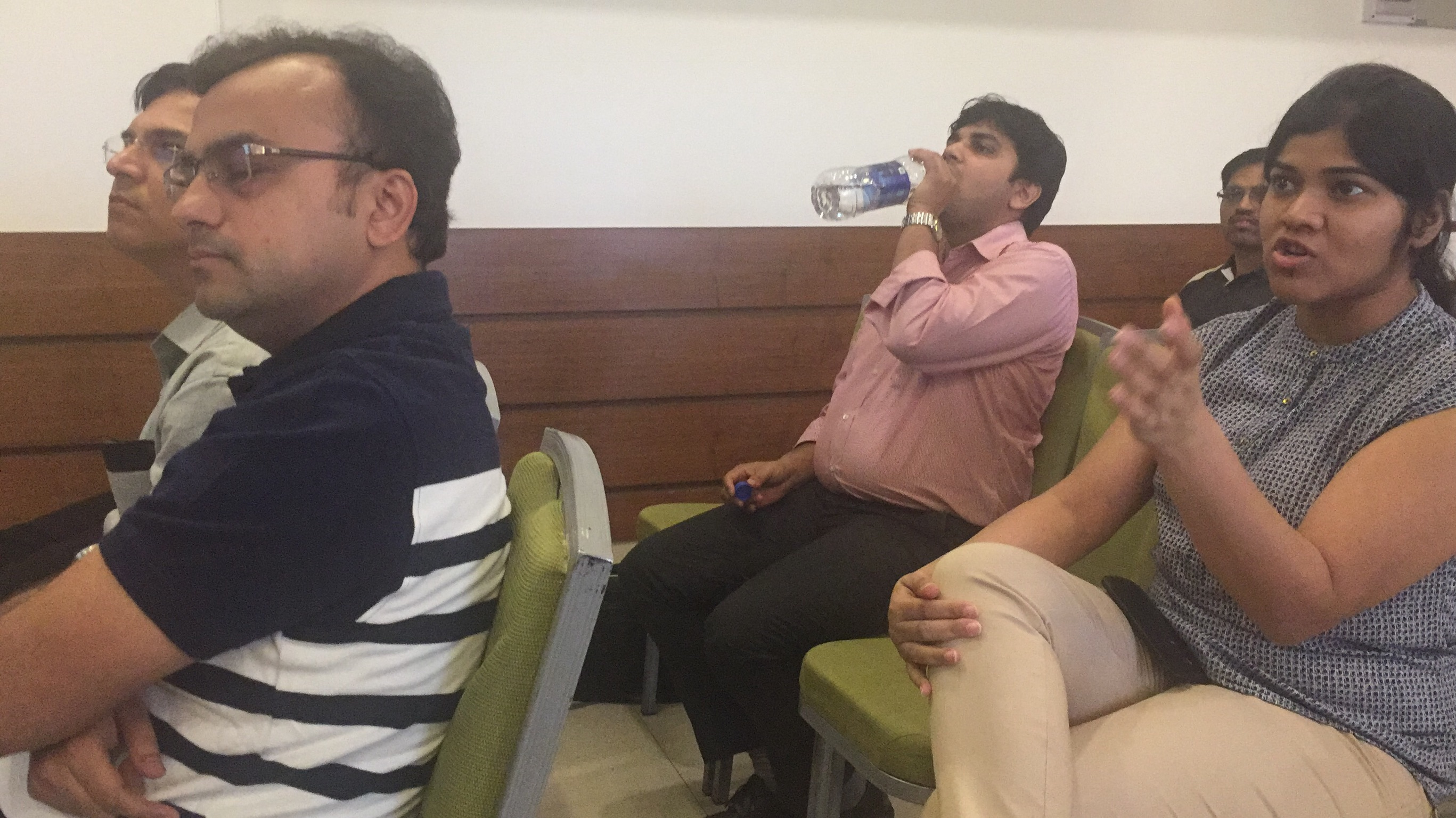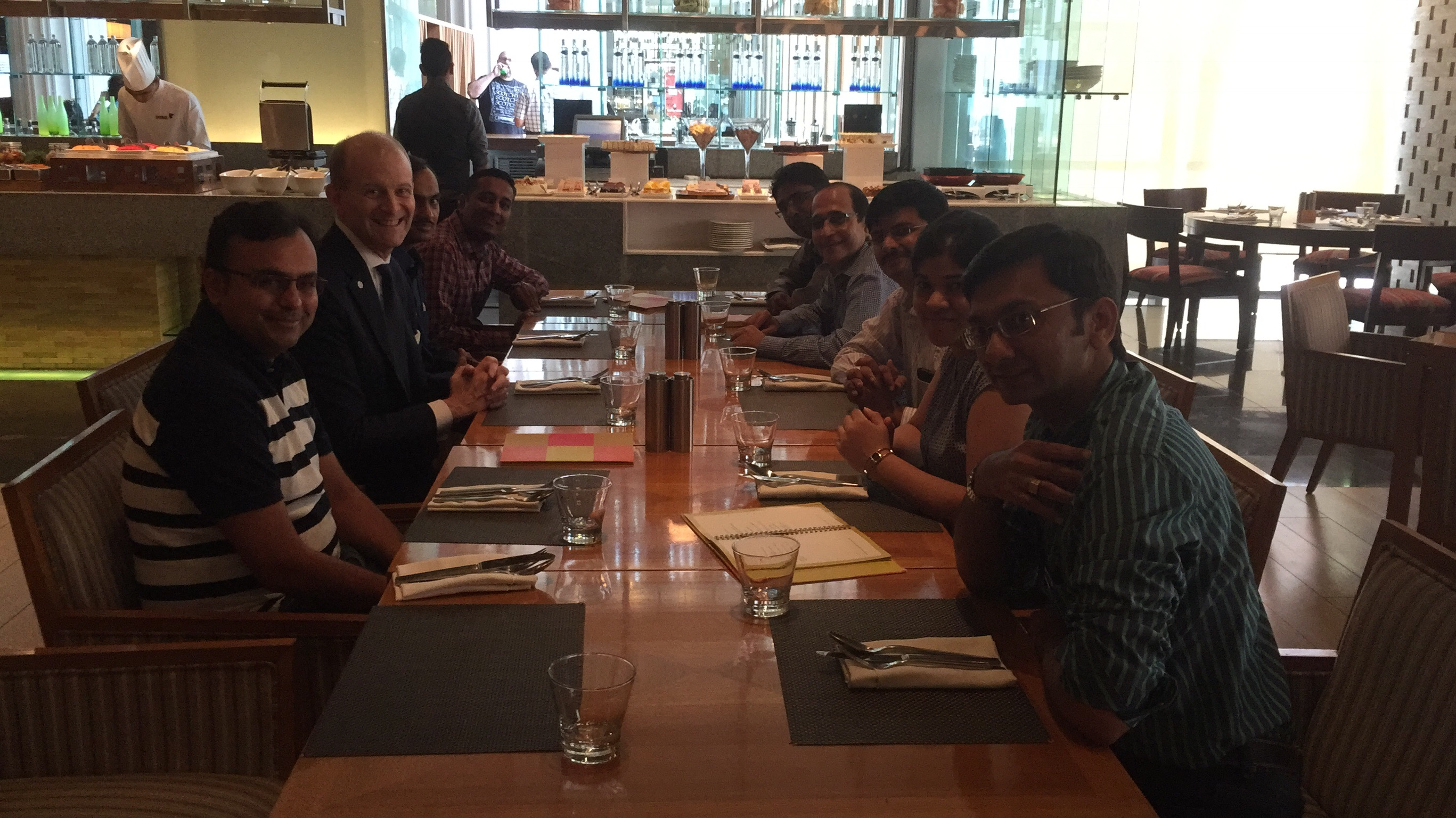- May 7, 2017
- Posted by:
- Category:BLOG, Events, Mumbai, Speaker Events
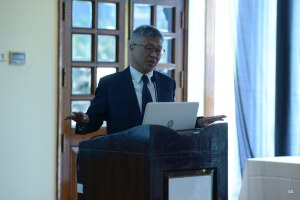
Contributed by: Ishwar Chidambaram, CFA
On 6th May 2017, CFA Society India- Mumbai Chapter hosted a talk by Mr. Xu Sitao, Chief Economist and Partner of Deloitte China. Mr. Xu said that most people view China as an important source of global demand. This view is correct, as you need to study Chinese investment and demand cycles in order to analyze commodity prices, which cannot be forecast using technical analysis alone. Further, if one neglects China, then one cannot correctly forecast global interest rates. For example the Reserve Bank of Australia cut rates twice last year because, in their opinion, China was headed for recession (hard landing) which would weaken commodities prices. Another example was the Fed’s reluctance in the past to cut interest rates, fearing a Chinese hard landing. These examples reflect China’s emergence as a center of gravity on the world stage.
Mr. Xu praised China’s government for making the economic miracle possible. In 1978-79, per capita GDP in China was only $200, below that of India. Prior to that, there was stagnation for more than a decade. Now, China is the second biggest economy at about $12 Trillion, behind only the US ($18.56 Trillion). Within the next 15 years, China will surely overtake the US as the world’s largest economy, even as China’s growth rate stabilizes. Credit for this is largely due to Deng Xiaoping, who ruled China from 1977 to 1989. After 1989, he was still in charge behind the scenes. From 1949 to 1976, China under Chairman Mao then was no different from North Korea. From 1961 to 1964 roughly 30 million people died from starvation, largely a man-made disaster. During the Cultural Revolution, another 5 million perished. India too had failures during this period like the Emergency, but the scale of human suffering witnessed in China was unprecedented anywhere else. He said these were failures of socialism and top-down planning, and that any reform needs to be driven from the bottom-up in order to succeed.
Returning to the subject of Deng Xiaoping, Mr. Xu emphasized that it is essential for national leaders to be pragmatic. He cited former Premier Deng’s famous aphorism, “It doesn’t matter if a cat is black or white, so long as it catches mice!” Mr. Xu suggested term limits and age limits for national leaders. Another unique feature of Chinese politics is that a leader does not directly choose his own successor. For example, the current premier, Xi Jinping was chosen by former premier Jiang Zemin. These checks and balances are a prerequisite for impartial governance. After the 1989 student uprising at Tiananmen, China slipped into a recession, as it was blacklisted worldwide. In 2001, China entered the WTO and the entire country became a Special Economic Zone (SEZ). From 2003 to 2012, China experienced a lost decade, as corruption mushroomed and new reforms dried up under a perpetual stimulus. China’s forte is scalability, as it is extremely good at ramping up to higher trajectories of development. The current premier, Xi Jinping, comes from a very privileged family and is a relative unknown in China.
In 1978 China’s economy was small, largely rural and agrarian. Today urban population is more than 65%. Urban consumption is a powerful driver. Only 4% of Chinese own passports. China is opening politically and economically. China is the largest trading partner across the comity of nations. Now China is emerging as the biggest source of foreign direct investment, and a leading provider of international liquidity.
Bilateral trade between Asian giants India and China currently stands at only 20% of the bilateral trade between China and South Korea. China is driving demand from both rich and poor countries. Mr. Xu is skeptical about the possibility of another commodities bull market, given consolidation in China’s industrial sector. The term “savings glut”- coined by former US Fed Chair Ben Bernanke- in relation to China’s excessive savings, has propelled global interest rates lower. India should pay attention to China’s impact on interest rates. China’s One Belt, One Road (OBOR) initiative was launched in 2013. This development strategy and framework, proposed by Chinese paramount leader Xi Jinping, focuses on connectivity and cooperation among countries primarily between China and the rest of Eurasia, and consists of two main components, the land-based “Silk Road Economic Belt” (SREB) and oceangoing “Maritime Silk Road” (MSR). The strategy underlines China’s push to take a bigger role in global affairs, and its need for priority capacity cooperation in areas such as steel manufacturing. The timing of this initiative coincided with former President Obama’s Pivot to Asia. Mr. Xu also mentioned the Asian Infrastructure Investment Bank, first proposed by China in October 2013, which is a development bank dedicated to lending for projects regarding infrastructure. Incidentally, India is the second largest equity holder in AIIB.
Protectionism is the biggest challenge confronting China. The solution is for China to open its markets further. The second challenge is the evolving trajectory of US-China relations, which have entered a difficult phase, with US viewing China as a competitor. The third challenge is costs, including currency costs and labor costs (both of which have gone up 7-8 times) as well as environmental costs. Finally, a burgeoning middle class and its growing expectations are another challenge. The final challenge is leadership and the system of alternate succession in China. This is particularly significant given the 19th Party Congress scheduled for October 2017.
China has printed plenty of money resulting in explosive credit growth. China’s debt to GDP ratio is expected to reach 400% as per Goldman Sachs. Mr. Xu is not as pessimistic, and believes China is in much better shape compared to nations like Italy and Australia. You will never see a bank run in China. In this respect, China is like Japan. Best solution for China is to slow the economic growth rate to more sustainable levels of about 3-4%. Another solution is to implement structural reform by selling state-owned assets via privatization. But this is unlikely to happen for now, given the impending Party Congress.
China’s currency was historically pegged to the US Dollar. Now the yuan seems to be slightly overvalued. Comparing foreign exchange reserves, while India has around $300 Billion worth of reserves, China’s tally is close to 9 times that number. Thus, China can pay for 20 months’ worth of imports. They have too much of reserves. Based on this, China’s currency ought to appreciate, but that will not happen due to cultural issues, Party Congress, etc.
By the end of 2017 China will ease restrictions. When that prospect materializes, Mr. Xu expects the yuan to depreciate. This will need to be accounted for while forecasting exchange rates across the world. The demographic dividend is more favorable in India than in China. Now even though the one-child policy has been scrapped, China is behind the curve in achieving more favorable demographics. The China-India relationship continues to underwhelm expectations. Both nations would need to understand each other’s strengths and weaknesses. China’s strength is its huge momentum. India’s strength is its favorable and sustainable demographic dividend. Corruption in China is much worse than in India.
China’s economy today is extremely open, despite the restrictions. The restrictions will be phased out after the Party Congress. On the point of reserves, one needs to view reserves in relation to imports. China can cover 20 months, while Japan can cover 40 months of imports. This is excessive. Depreciating the currency should be done before the onset of a crisis. Policy makers must reduce the size of asset bubbles before they burst. More capital outflows (but not capital flight to safety) out of China are perfectly fine. We should not take Donald Trump literally, but we ought to take him seriously. There is no budget system in China, being a non-democratic society. Automation is skyrocketing due to spiraling labor costs. On the shadow banking system, it is a natural consequence of market development and regulatory arbitrage. Even the government relies on shadow banking to finance some activities. Further liberalization of the banking sector is desirable.
–IC






